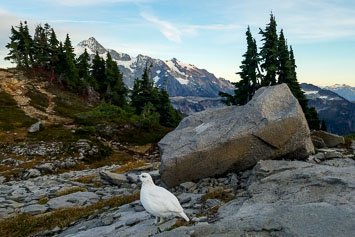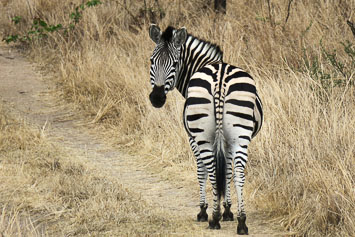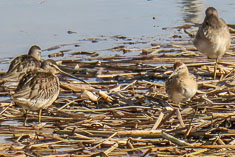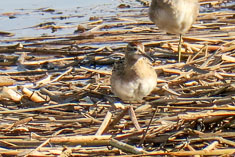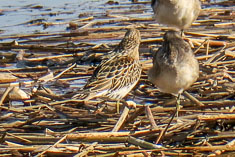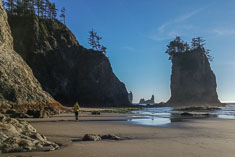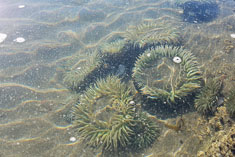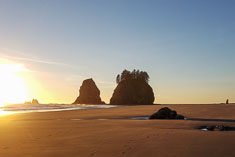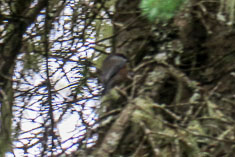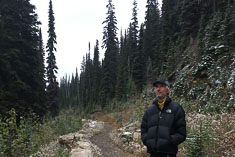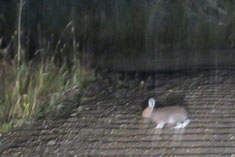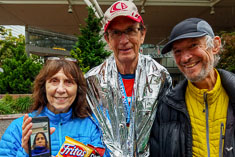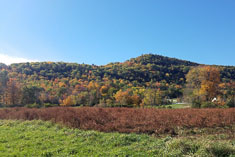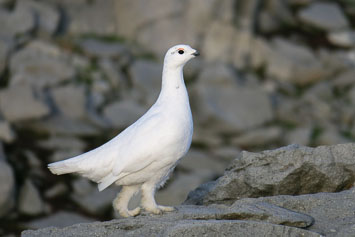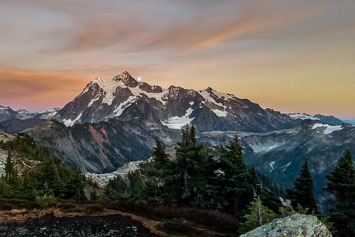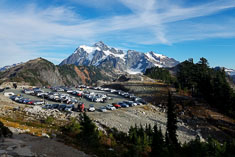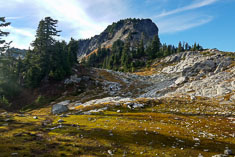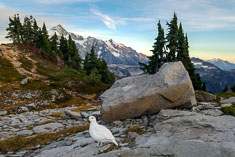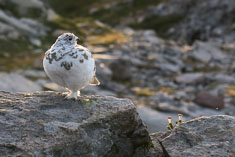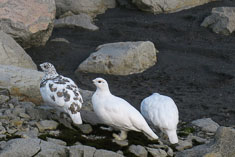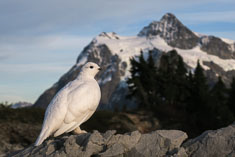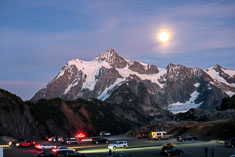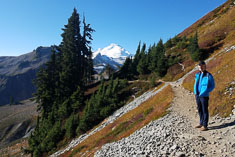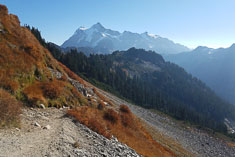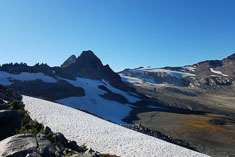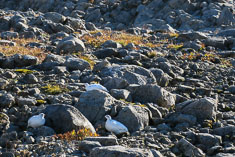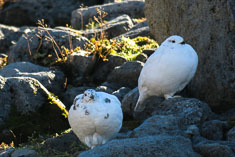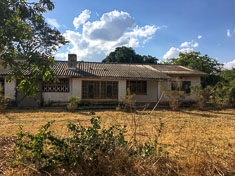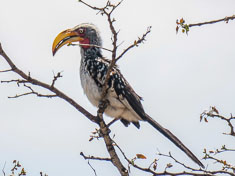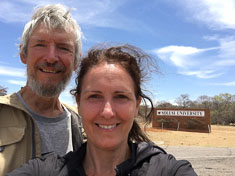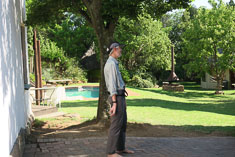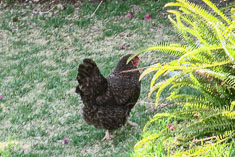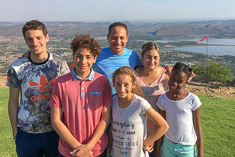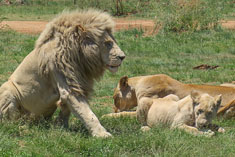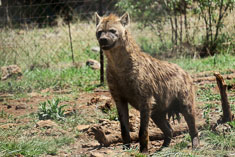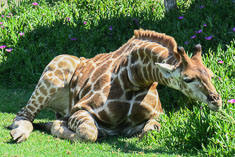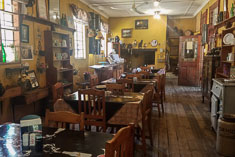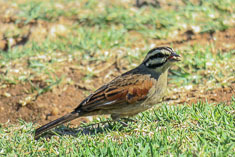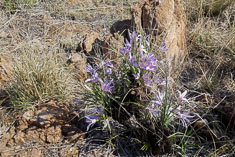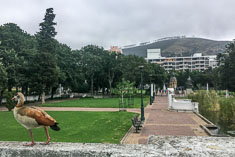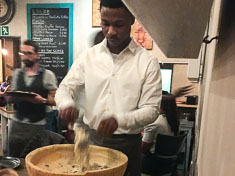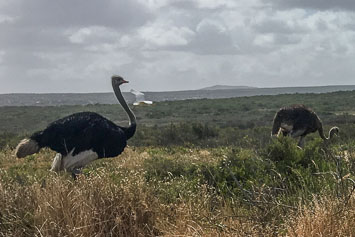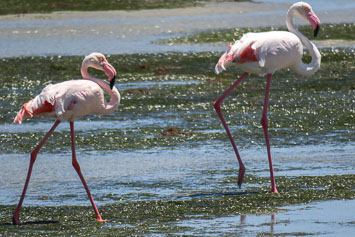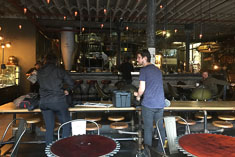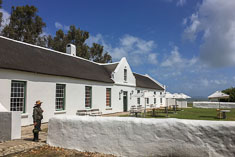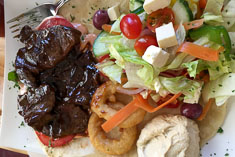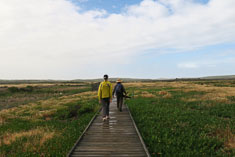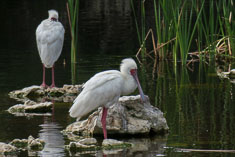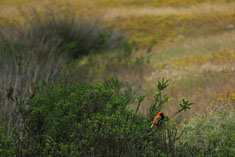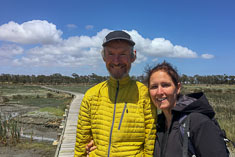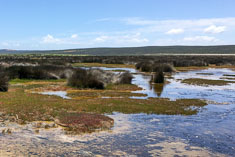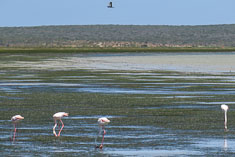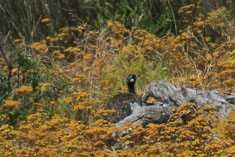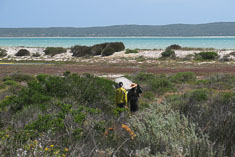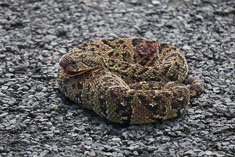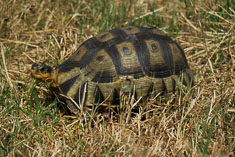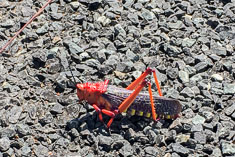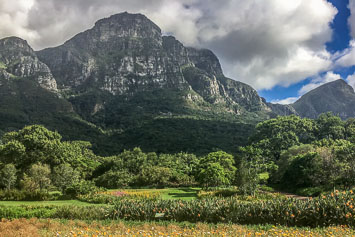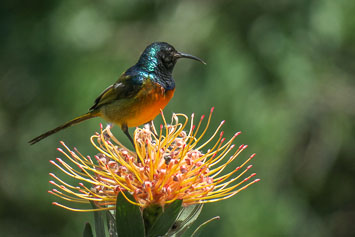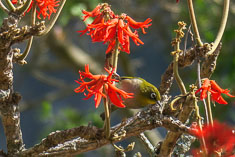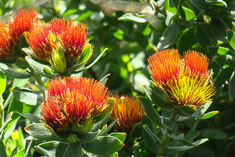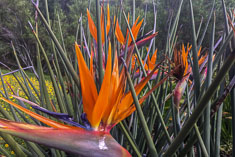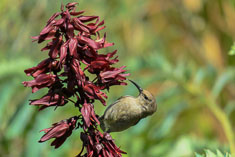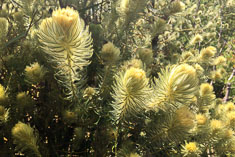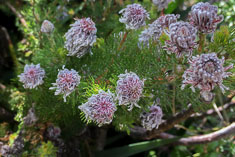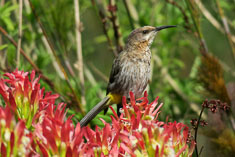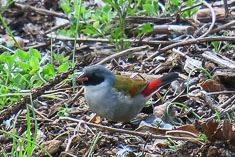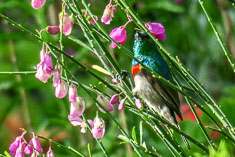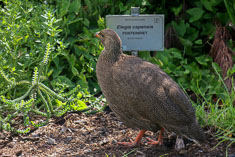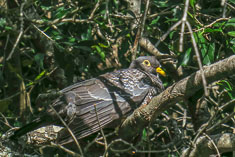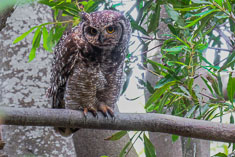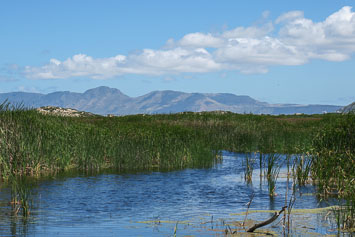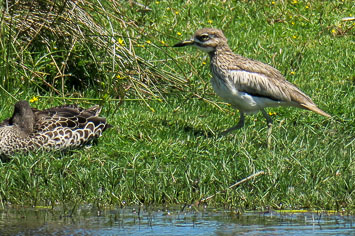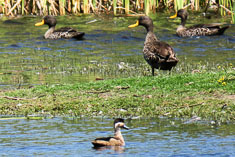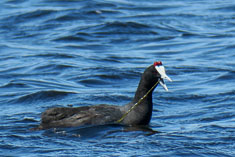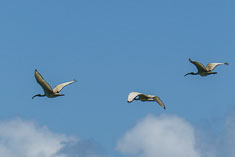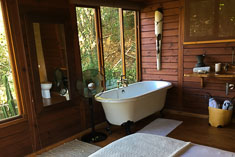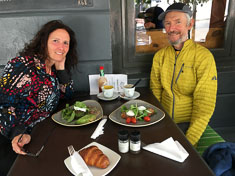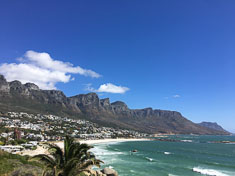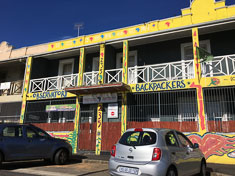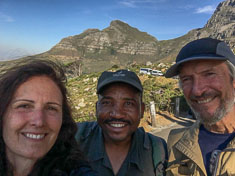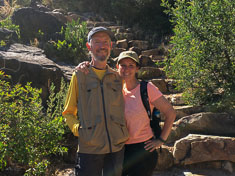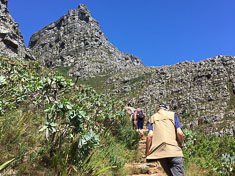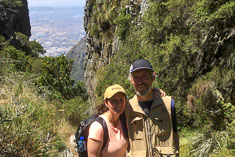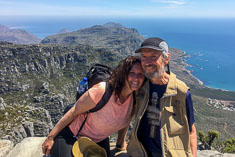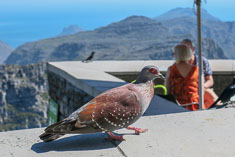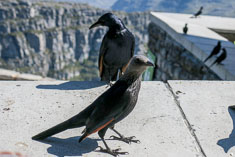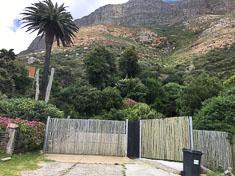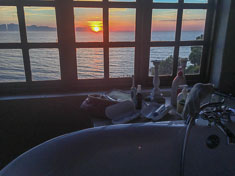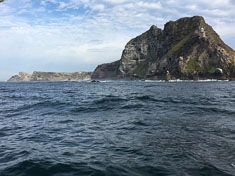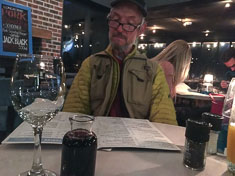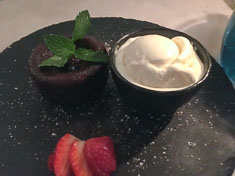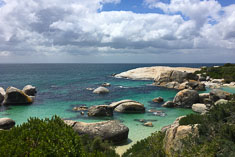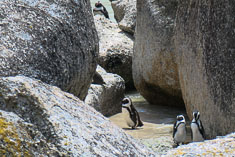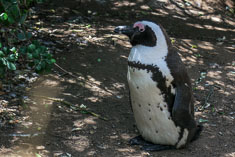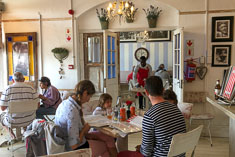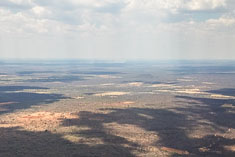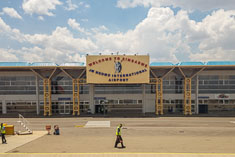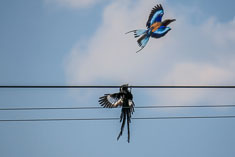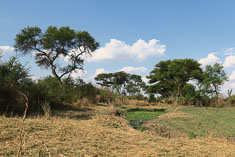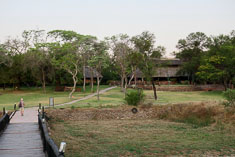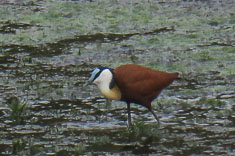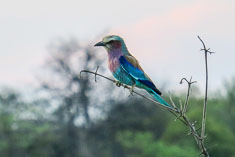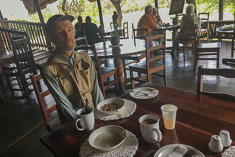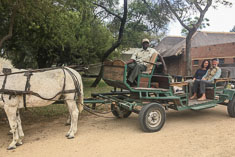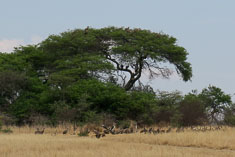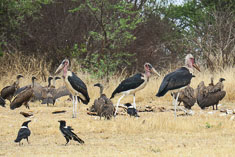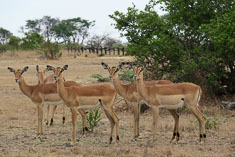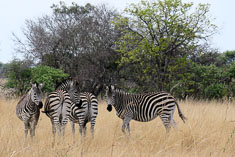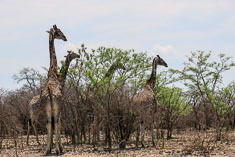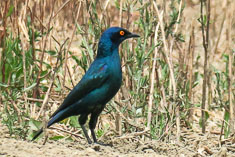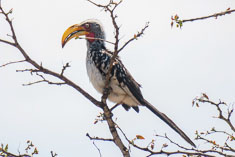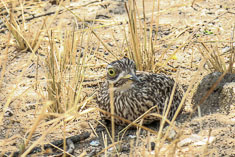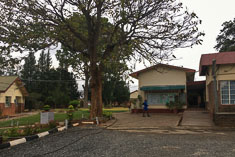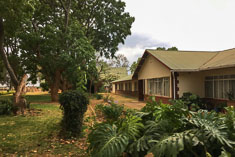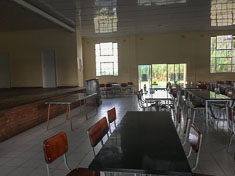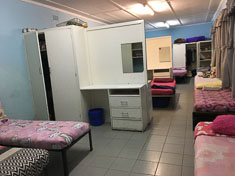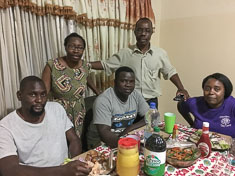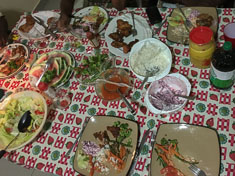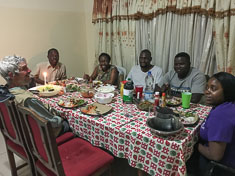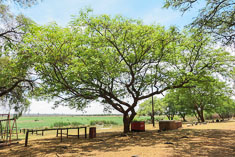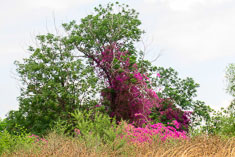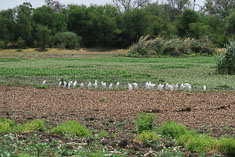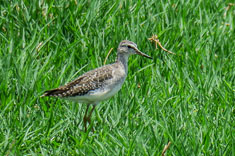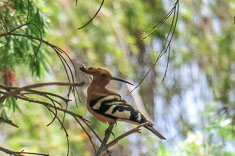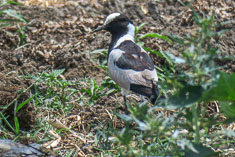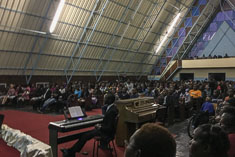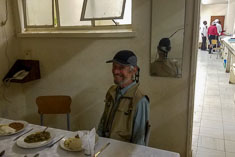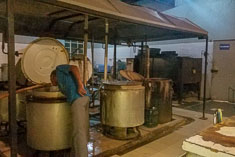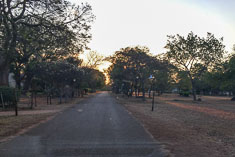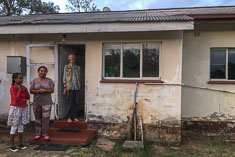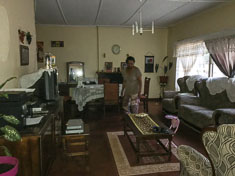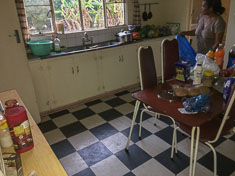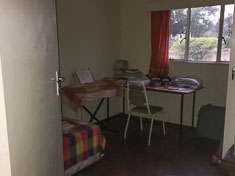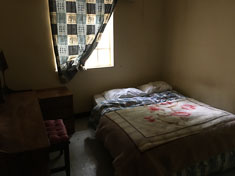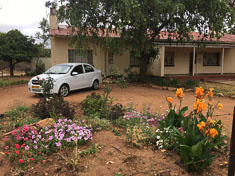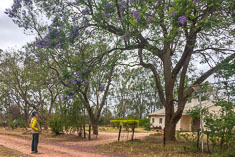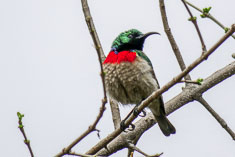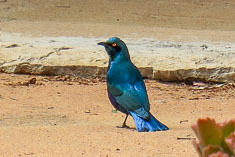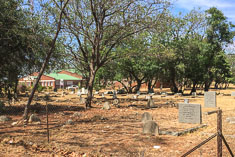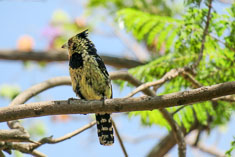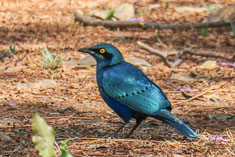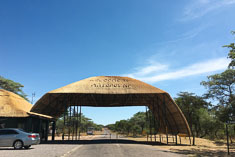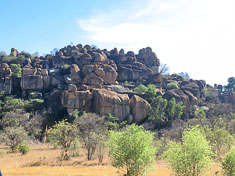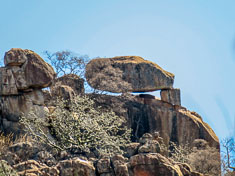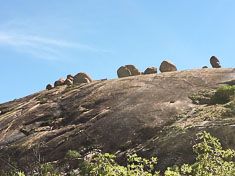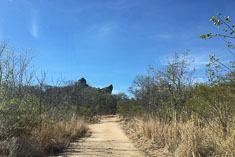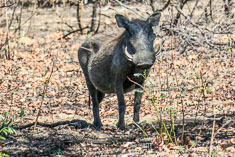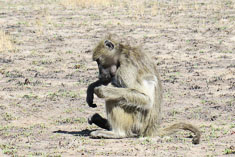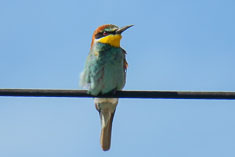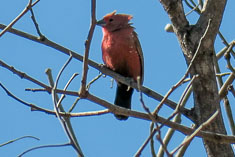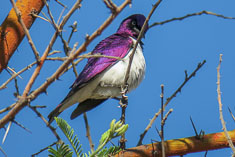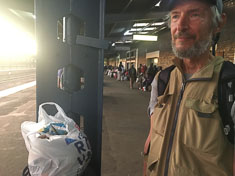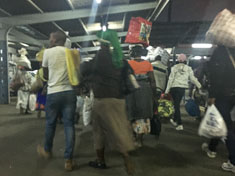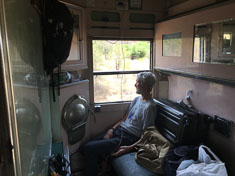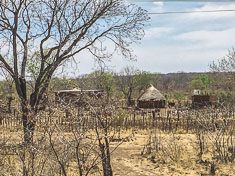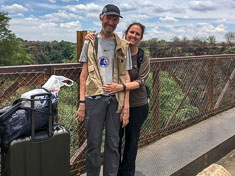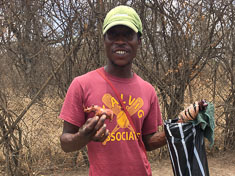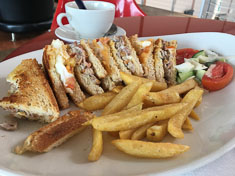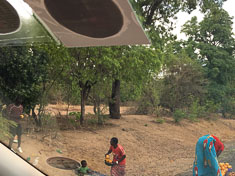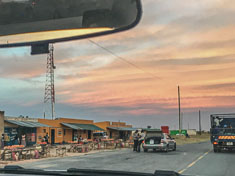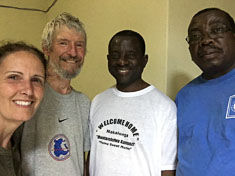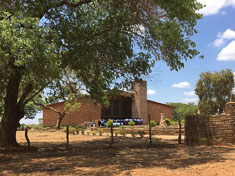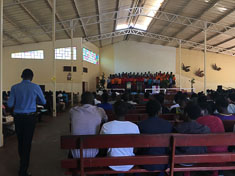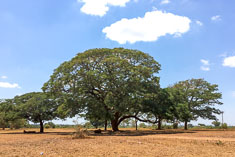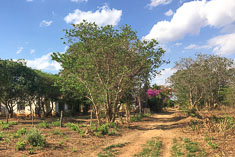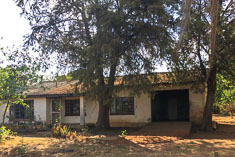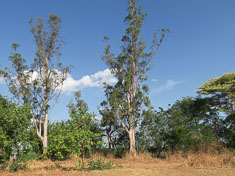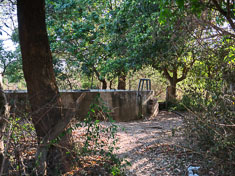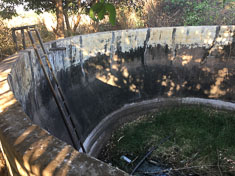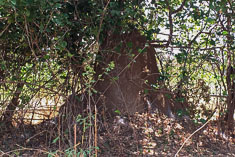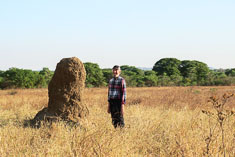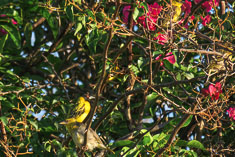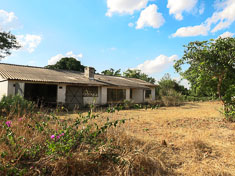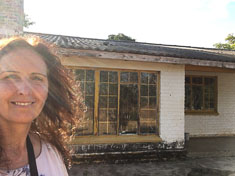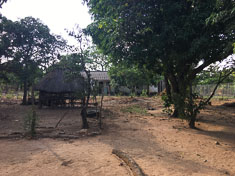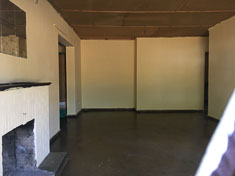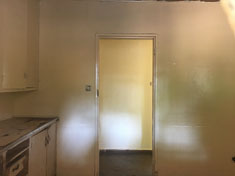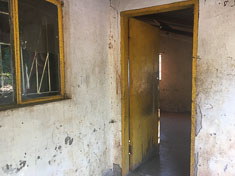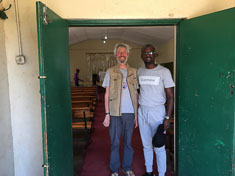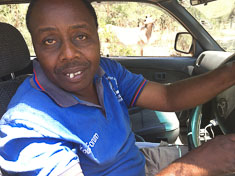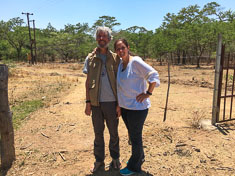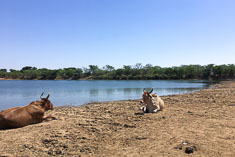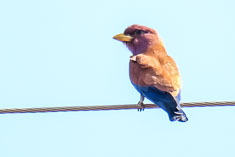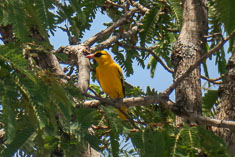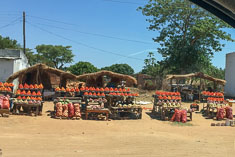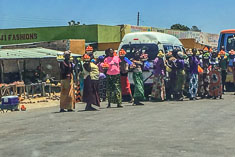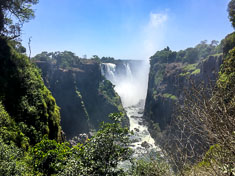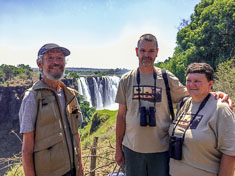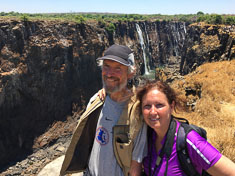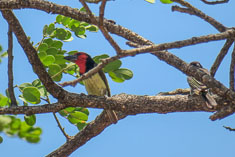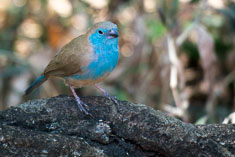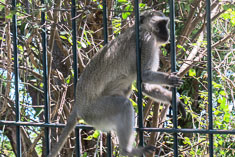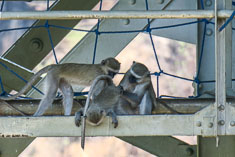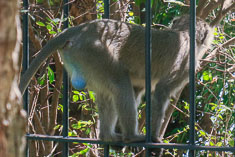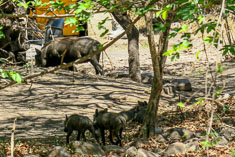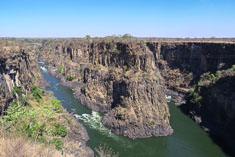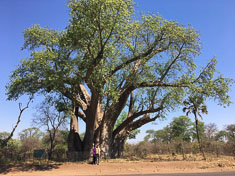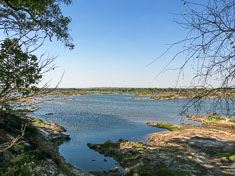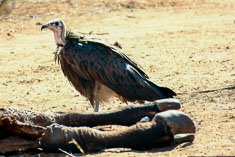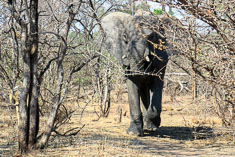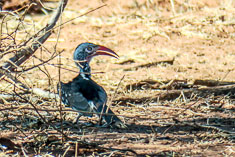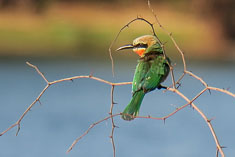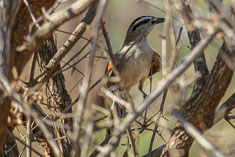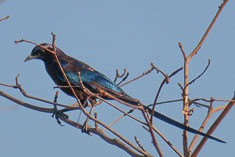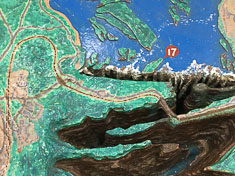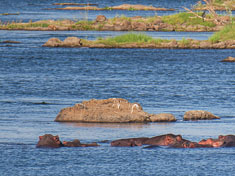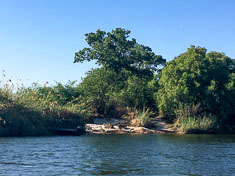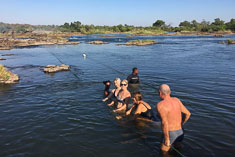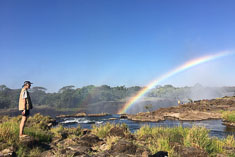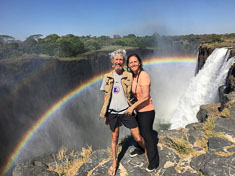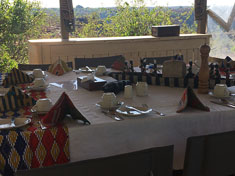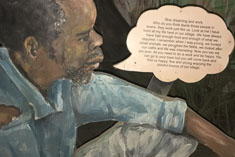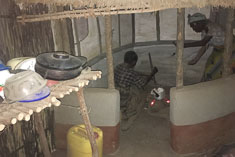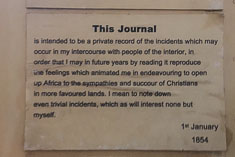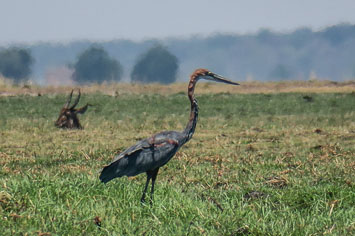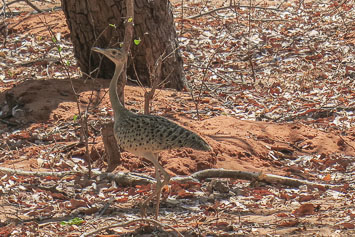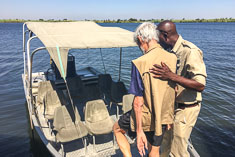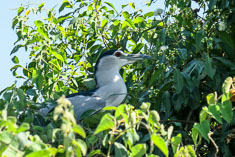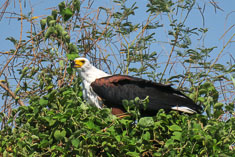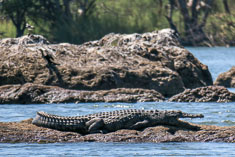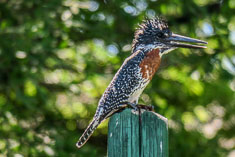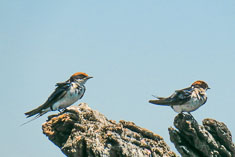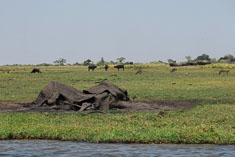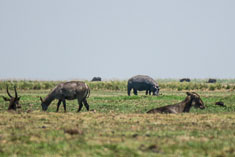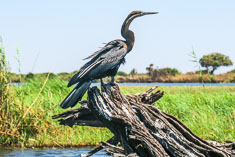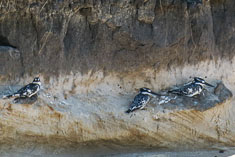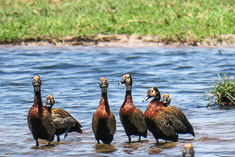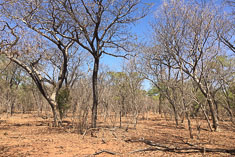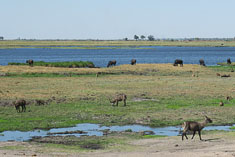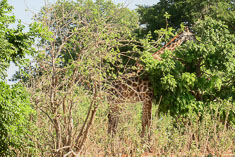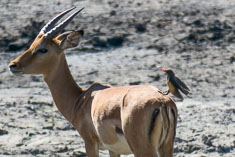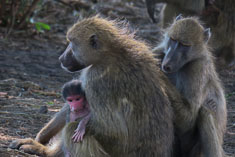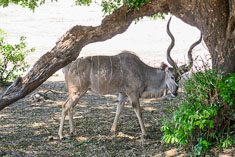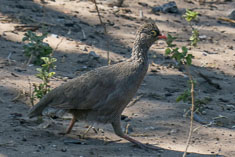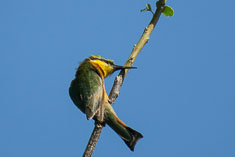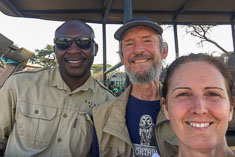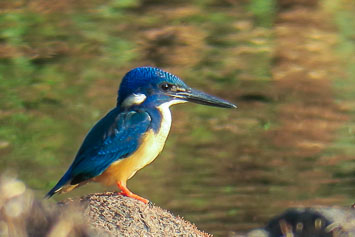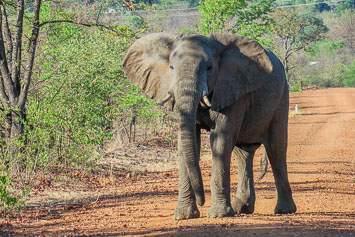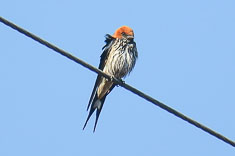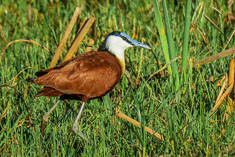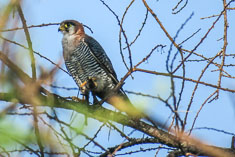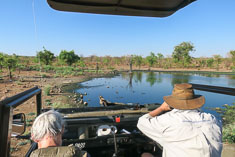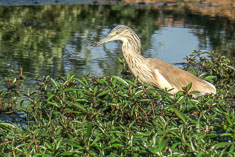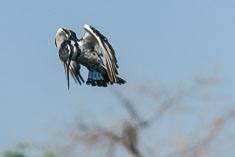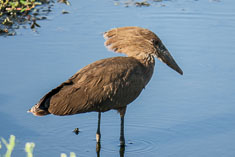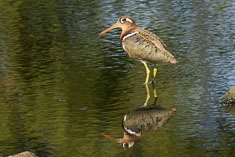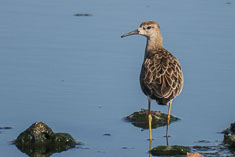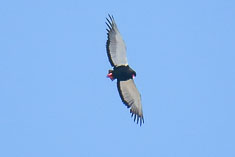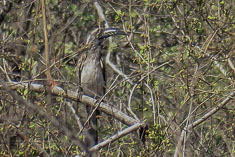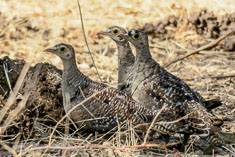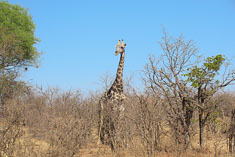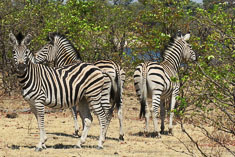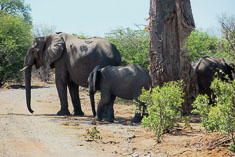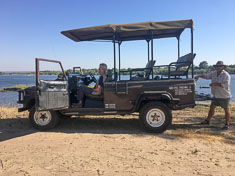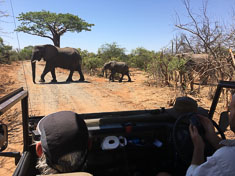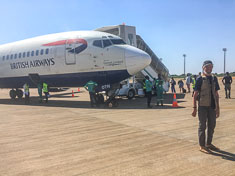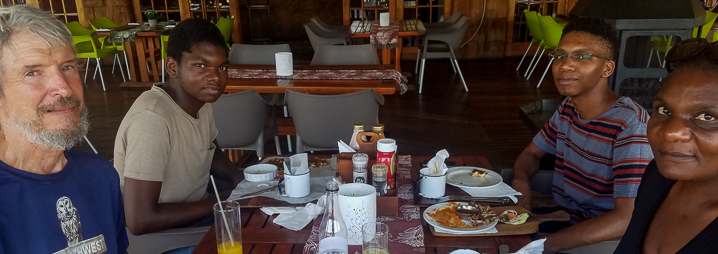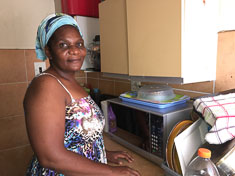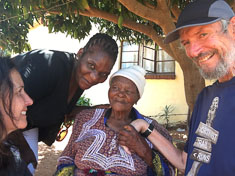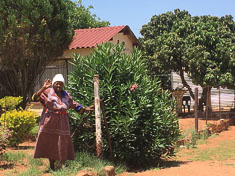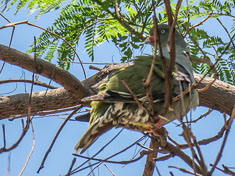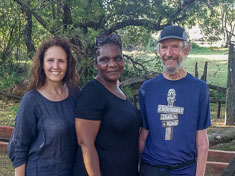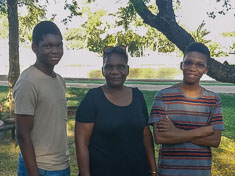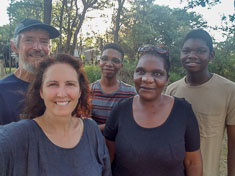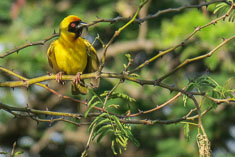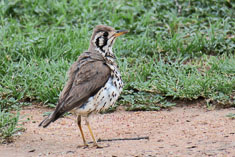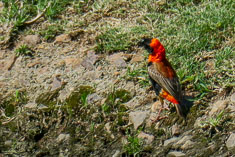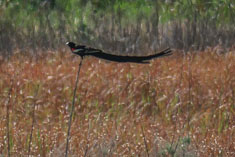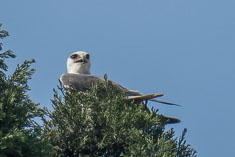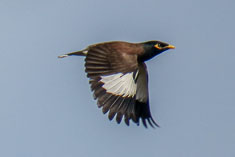9/23/2018 Sharp-tailed Sandpiper
I have been looking for this species for several years now, with my most recent failed attempt just yesterday here at Wylie Slough. Ed and Delia and I tried twice yesterday and missed it both times, though a rain shower abbreviated one of our attempts. David and I finally succeeded today. An Asian cousin of our Pectoral Sandpiper, the Sharp-tailed normally migrates from the Siberian Arctic down the west coast of the Pacific Ocean. Two or three times each fall one shows up in Washington, and I usually show up to look for it one day after it resumes its southbound journey.
I have been looking for this species for several years now, with my most recent failed attempt just yesterday here at Wylie Slough. Ed and Delia and I tried twice yesterday and missed it both times, though a rain shower abbreviated one of our attempts. David and I finally succeeded today. An Asian cousin of our Pectoral Sandpiper, the Sharp-tailed normally migrates from the Siberian Arctic down the west coast of the Pacific Ocean. Two or three times each fall one shows up in Washington, and I usually show up to look for it one day after it resumes its southbound journey.
9/25/2018 Second Beach
David and I took another trip out to Neah Bay. He wanted to scout out places to take KC during upcoming visit and I was no doubt searching for another rare bird, though I forget which one. While we were out there we did an afternoon hike to Second Beach. We explored caves and tide pools, marveled at certain self burying crustaceans in the sand and waited sunset, along with about 30 other people, in hopes of seeing the green flash. As I recall, offshore fog too distant to be discerned until the last moment of the sunset thwarted that hope. The beach was nonetheless stunning in the late afternoon light. David did end up taking KC back out there a week later but the weather was disappointing.
On the way home we found the previously reported American Golden Plover at Dungeness Landing then did an afternoon hike at Deer Park in the Olympics. The trail is a pleasant ridge walk with great views but the road up there is an intimidating traverse of precipitous forested slopes.
David and I took another trip out to Neah Bay. He wanted to scout out places to take KC during upcoming visit and I was no doubt searching for another rare bird, though I forget which one. While we were out there we did an afternoon hike to Second Beach. We explored caves and tide pools, marveled at certain self burying crustaceans in the sand and waited sunset, along with about 30 other people, in hopes of seeing the green flash. As I recall, offshore fog too distant to be discerned until the last moment of the sunset thwarted that hope. The beach was nonetheless stunning in the late afternoon light. David did end up taking KC back out there a week later but the weather was disappointing.
On the way home we found the previously reported American Golden Plover at Dungeness Landing then did an afternoon hike at Deer Park in the Olympics. The trail is a pleasant ridge walk with great views but the road up there is an intimidating traverse of precipitous forested slopes.
10/06/2018 Salmo Pass
We spent both last night and the night before in Spokane. In between, we drove up to Bunchgrass Meadows and Salmo Pass in extreme northeastern Washington. It is a pilgrimage I perform almost annually in search of three or four species of birds that are difficult to find elsewhere in the state. Yesterday our quest was abundantly rewarded; we found all three of my target species.
Spruce Grouse are reported to prefer higher elevation lodgepole pine and Engelman spruce forest with a relatively low understory of huckleberry and other shrubs, just the sort of habitat that surrounds the broad grassy opening of Bunchgrass Meadows. Although I haven't personally seen Spruce Grouse there, one had been reported within the past week so we drove up there first. We arrived pretty early by our standards; the temperature was still in the low 30s. We parked at the first big switchback above the meadow because I thought I heard Boreal Chickadee calls from a passing flock of chickadees and nuthatches. Their calls are slightly slower and more nasal than those of the Mountain Chickadees which often occur with them and in larger numbers. The flock moved on before I could catch a glimpse of any of the birds in it. Darchelle was cold so she returned to the car. Walking up around the next corner, I flushed four grouse from rather tall huckleberry and rhododendron bushes 20 yards or more ahead of me. The grouse were small, dark gray and short-tailed. Indisputably Spruce although uncharacteristically skittish. They shot up and away like cannonballs. I retrieved Darchelle and we bushwhacked into the woods in pursuit of the birds and managed to glimpse one or two of them as they flushed again from perches 30 feet or more up in mossy spruce trees.
Back to the chickadees. We heard more of them and by imitating a Pygmy Owl call I was able to lure them in fairly close but we still couldn't get a good view to confirm my aural identification of the two species. Returning to the car, we drove slowly up to the crest of the gentle ridge south of the Meadows. Characteristic of ridges in the region, the southwest side of the ridge is an open dry meadow while the northeast side is a mixed age Engelman spruce forest. The meadow was easier walking but the birds were in the woods - another mixed species flock with another two Boreal Chickadees which again I was only able to identify by voice. We stopped again for another flock in the spruce forest near where we'd seen the grouse and this time Darchelle was able to confirm my chickadee "sightings" with an unfortunately blurry photo.
A male Spruce Grouse foraging in dried grass along Sullivan Creek Road did not stick around for Darchelle to see. I didn't get much of a sighting either, just a very quick glimpse of bold white spots arrayed in an arc across the dark gray rump of a small grouse.
When we reached Salmo Pass it began to snow. I had hoped to get there earlier but we went for a hike anyhow, continuing east past the boulders in the road and out a mile or so in the falling snow on the Shedroof Mountain trail. The trail climbs gently through open forest of Spruce and Subalpine Fir with an understory of Cascade Azalea (Rhododendron albiflorum). As we hiked the clouds closed in and the snow thickened a bit and the leafy yellow understory caught both the snow and the fading light. We held hands in my coat pocket for the last mile back on the road. Having worn only my sweatpants, I was thoroughly chilled by the time we reached the car.
We parked at the little campsite about a half-mile below the pass and ate a bit of supper while we waited for darkness. It was already dark but not yet dark enough for owls. That little campsite was where I slept in the car after the 50K on Mount Spokane where I was the sweeper, and good thing too because otherwise I would not have made the 25K cutoff time. Apparently I had a signal there because Darchelle, in Portland for the Marathon the next day, recalled my calling her and telling her about the spot. If I tried for Boreal Owls that night, I must not have been successful because I did not save a checklist. Last night, after our supper of sorts, Darchelle hooked my phone up to portable speaker and we stepped out into the darkness and played the owl call. A Boreal Owl must have been waiting for us because it let out a very loud "skiew" almost immediately. The owl waited nearby while we fumbled around in the car for the flashlight but declined to appear once we found it, though it kept calling from time to time as if to keep us apprised of its location.
On the way down the hill, the snow still falling gently, we caught a Snowshoe Hare flat-footed in the middle of the road. Framed in our headlights, the little rabbit with big white feet zigzagged down the road in front of us for almost half a mile while Darchelle tried for photos. Back in Spokane we snagged the next-to-last room available at the Quality Inn Downtown 4th Avenue. Who knew that so many people would converge on Spokane for parents weekend at Gonzaga University? It was a bit more than we wanted to pay but the room was very comfortable and the breakfast this morning was ample.
Before breakfast I remembered a dream about a bus.
Nothing about the woman reminds me of anybody in particular except that perhaps in her anger and blaming me for her predicament, she reminds me of my ex-wife. If that were the case then the bus might represent my marriage to her. it is also possible that both she and the driver represent parts of myself, and the bus represents living with the certainty of dying from ALS.
We spent both last night and the night before in Spokane. In between, we drove up to Bunchgrass Meadows and Salmo Pass in extreme northeastern Washington. It is a pilgrimage I perform almost annually in search of three or four species of birds that are difficult to find elsewhere in the state. Yesterday our quest was abundantly rewarded; we found all three of my target species.
Spruce Grouse are reported to prefer higher elevation lodgepole pine and Engelman spruce forest with a relatively low understory of huckleberry and other shrubs, just the sort of habitat that surrounds the broad grassy opening of Bunchgrass Meadows. Although I haven't personally seen Spruce Grouse there, one had been reported within the past week so we drove up there first. We arrived pretty early by our standards; the temperature was still in the low 30s. We parked at the first big switchback above the meadow because I thought I heard Boreal Chickadee calls from a passing flock of chickadees and nuthatches. Their calls are slightly slower and more nasal than those of the Mountain Chickadees which often occur with them and in larger numbers. The flock moved on before I could catch a glimpse of any of the birds in it. Darchelle was cold so she returned to the car. Walking up around the next corner, I flushed four grouse from rather tall huckleberry and rhododendron bushes 20 yards or more ahead of me. The grouse were small, dark gray and short-tailed. Indisputably Spruce although uncharacteristically skittish. They shot up and away like cannonballs. I retrieved Darchelle and we bushwhacked into the woods in pursuit of the birds and managed to glimpse one or two of them as they flushed again from perches 30 feet or more up in mossy spruce trees.
Back to the chickadees. We heard more of them and by imitating a Pygmy Owl call I was able to lure them in fairly close but we still couldn't get a good view to confirm my aural identification of the two species. Returning to the car, we drove slowly up to the crest of the gentle ridge south of the Meadows. Characteristic of ridges in the region, the southwest side of the ridge is an open dry meadow while the northeast side is a mixed age Engelman spruce forest. The meadow was easier walking but the birds were in the woods - another mixed species flock with another two Boreal Chickadees which again I was only able to identify by voice. We stopped again for another flock in the spruce forest near where we'd seen the grouse and this time Darchelle was able to confirm my chickadee "sightings" with an unfortunately blurry photo.
A male Spruce Grouse foraging in dried grass along Sullivan Creek Road did not stick around for Darchelle to see. I didn't get much of a sighting either, just a very quick glimpse of bold white spots arrayed in an arc across the dark gray rump of a small grouse.
When we reached Salmo Pass it began to snow. I had hoped to get there earlier but we went for a hike anyhow, continuing east past the boulders in the road and out a mile or so in the falling snow on the Shedroof Mountain trail. The trail climbs gently through open forest of Spruce and Subalpine Fir with an understory of Cascade Azalea (Rhododendron albiflorum). As we hiked the clouds closed in and the snow thickened a bit and the leafy yellow understory caught both the snow and the fading light. We held hands in my coat pocket for the last mile back on the road. Having worn only my sweatpants, I was thoroughly chilled by the time we reached the car.
We parked at the little campsite about a half-mile below the pass and ate a bit of supper while we waited for darkness. It was already dark but not yet dark enough for owls. That little campsite was where I slept in the car after the 50K on Mount Spokane where I was the sweeper, and good thing too because otherwise I would not have made the 25K cutoff time. Apparently I had a signal there because Darchelle, in Portland for the Marathon the next day, recalled my calling her and telling her about the spot. If I tried for Boreal Owls that night, I must not have been successful because I did not save a checklist. Last night, after our supper of sorts, Darchelle hooked my phone up to portable speaker and we stepped out into the darkness and played the owl call. A Boreal Owl must have been waiting for us because it let out a very loud "skiew" almost immediately. The owl waited nearby while we fumbled around in the car for the flashlight but declined to appear once we found it, though it kept calling from time to time as if to keep us apprised of its location.
On the way down the hill, the snow still falling gently, we caught a Snowshoe Hare flat-footed in the middle of the road. Framed in our headlights, the little rabbit with big white feet zigzagged down the road in front of us for almost half a mile while Darchelle tried for photos. Back in Spokane we snagged the next-to-last room available at the Quality Inn Downtown 4th Avenue. Who knew that so many people would converge on Spokane for parents weekend at Gonzaga University? It was a bit more than we wanted to pay but the room was very comfortable and the breakfast this morning was ample.
Before breakfast I remembered a dream about a bus.
I am waiting at a bus stop. The bus arrives and it is one of those short ones, and it is painted
white as if whitewashed. The bus is empty except for the male driver and a woman in the very back
of the bus on my side. She is shouting at me through the closed window. I can't make out what she
is saying but I understand that she is angry because she is trapped in the bus and it is my fault.
I go to get on the bus but there is no door in the usual place. Instead there is a triangular hole
about 2 feet tall around the corner from where the door should be, in the front end of the bus. At
the thought of crawling through the hole into the bus I feel an intense sense of claustrophobia. I
need to get on the bus but if I do I will be trapped, just like the woman is, and I will not be able
to get off again.
The whitewashed bus calls to mind the verse in the Bible in which Jesus refers to "whitewashed
sepulchers", so the bus has at least an association with death. I don't have any association with
the triangular opening, except perhaps like a traffic sign of the same shape, it serves as a
warning. The waiting at the bus stop, and the prospect of riding in the bus, raises a question of
agency. My only exercise of agency in the dream would be to get on the bus; at that point I would
relinquish control over my journey. Rather than choose to either board the bus or not, I wake up.Nothing about the woman reminds me of anybody in particular except that perhaps in her anger and blaming me for her predicament, she reminds me of my ex-wife. If that were the case then the bus might represent my marriage to her. it is also possible that both she and the driver represent parts of myself, and the bus represents living with the certainty of dying from ALS.
10/07/2018 Portlandathon
Portland has been Richard's annual marathon for the past several years. This summer it apparently died and was reborn as the imaginatively named Portlandathon. The marathon course still features the St John's bridge and a promenade along the suburban bluffs above the north shore of the Columbia River but for the past two years it has been an out and back instead of the traditional loop course which I ran for my last marathon back in 2016. This year's race seemed well-organized and well supported though barely a tenth as many runners finished today as compared with 10 years ago.
Richard had a bit of a tough run. He ran the first couple miles at about 11 minutes/mile, well under his goal pace, perhaps because he started alongside the 3:30 pace group. By about mile 10 his foot was getting sore, an injury incurred during his last long run two or three weeks ago. Darchelle and Donna and I followed him along the course in the car, hopping out every few miles to greet him. We worried about his foot but it stabilized and he was able to finish. I joined him for about a mile at 23 then Donna walked him in for the last mile and a half. Alicia joined us from Michigan via Facetime for post-race photos.
Portland has been Richard's annual marathon for the past several years. This summer it apparently died and was reborn as the imaginatively named Portlandathon. The marathon course still features the St John's bridge and a promenade along the suburban bluffs above the north shore of the Columbia River but for the past two years it has been an out and back instead of the traditional loop course which I ran for my last marathon back in 2016. This year's race seemed well-organized and well supported though barely a tenth as many runners finished today as compared with 10 years ago.
Richard had a bit of a tough run. He ran the first couple miles at about 11 minutes/mile, well under his goal pace, perhaps because he started alongside the 3:30 pace group. By about mile 10 his foot was getting sore, an injury incurred during his last long run two or three weeks ago. Darchelle and Donna and I followed him along the course in the car, hopping out every few miles to greet him. We worried about his foot but it stabilized and he was able to finish. I joined him for about a mile at 23 then Donna walked him in for the last mile and a half. Alicia joined us from Michigan via Facetime for post-race photos.
10/13/2018 LeConte's Sparrow
This morning around 11:30 I revisited Rick Davis's weedy pumpkin patch at the north end of the lower field. The east half of the patch, over by the maple trees, is where he grew the pumpkins and gourds; it has mostly weedy grasses with a fair amount of bare dirt and quite a few busted pumpkins. That's where the Savanna and White-crowned Sparrows hang out, and most of the other sparrows most of the time as well. The west half of the patch, which borders the brushy triangle enclosed on its other two sides by the Wildcat River, consists of an almost pure stand, nearly chest-high where it has not been beaten down, of a reddish weed in the buckwheat family which I feel I should know the name of but don't. When alarmed by my appearance yesterday evening, that's where the sparrows took refuge.
I counted roughly 140 yesterday evening as they flew from east to west over a narrow plowed strip dividing the two halves of the weed patch, and estimated another 50 or so work in and around the tall weeds and the brushy triangle along the river. I was in a hurry so couldn't linger to identify more than a handful of the sparrows. This morning I walked down there intending to spend some time trying to assess the composition of the flock, a time-consuming project since I have to get close enough to the birds to identify them without binoculars. That typically means stalking slowly up to the edge of the weed patch aand waiting patiently for sparrows to pop up nearby. Their vocalizations help: juncos "tick", Lincoln's' "chick", Swamps "cheet", White-throateds "pseet", White-crowneds "peet", Savannas "tseet", and Song Sparrows "chenk" in a somewhat nasal and mildly irritated tone. Or so it sounds to me. The LeConte's Sparrow didn't make any sound at all.
I walked quietly over to the southwest corner of the week patch and bellied up to the tall reddish buckwheats. Then I waited. A song sparrow or two "chenk"ed then a more interesting juvenile Swamp Sparrow appeared about 10 feet in front of me. Distinctive buff and gray underparts, rather rufous above and on the crown with a broad gray stripe over the eye - they are always a treat for me because they are quite rare in Washington. Suddenly a very different sparrow popped up just a few feet from the Swamp Sparrow and perhaps a bit closer to me. It was smaller than the Swamp with a stubby flat-headed appearance and overall plumage of bright orangish buff below and almost black above with three or four bold white streaks down the back extending to the base of the tail, and two heavy almost black stripes on the crown separated by a narrow whitish line. It took me a while to get a clear visual fix on the configuration of the crown stripes as the bird hopped through the weeds in a semi-circle around me staying about 10 feet away. I can't use a camera or binoculars so I don't carry either one.
Realizing that this was not a local sparrow, I tried to visually imprint the details of its plumage in my mind. The underparts showed an unusual pattern of streaking - bold and black on the yellowish white flanks, faint and brown on a buffy orange breast band which separated the whitish throat from the whitish belly. The face was mostly orangish buff extending well above the eye to the dark crown stripe, but there was a grayish area somewhere behind the eye, a dark ear spot and a little or no eyering. I looked carefully at the color of the bill, a pallid buffy gray, but did not specifically consider the more diagnostic size. In my mental image, the bill is relatively small and conical, like a junco but shorter I think. At one point the bird perched only 6 feet from me about a foot off the ground giving me an opportunity to study its back. Both the back and folded wings were very dark, almost black, with two or three bold white stripes down the back augmented by another broad white stripe formed by the edges of the folded secondaries. Unfortunately I did not specifically observe the color of the nape other than to notice that the dark brown crown stripes were not continuous with the black on the back. The tail was rather short and of a similar buffy gray color to the bill. It appeared slightly forked.
This morning around 11:30 I revisited Rick Davis's weedy pumpkin patch at the north end of the lower field. The east half of the patch, over by the maple trees, is where he grew the pumpkins and gourds; it has mostly weedy grasses with a fair amount of bare dirt and quite a few busted pumpkins. That's where the Savanna and White-crowned Sparrows hang out, and most of the other sparrows most of the time as well. The west half of the patch, which borders the brushy triangle enclosed on its other two sides by the Wildcat River, consists of an almost pure stand, nearly chest-high where it has not been beaten down, of a reddish weed in the buckwheat family which I feel I should know the name of but don't. When alarmed by my appearance yesterday evening, that's where the sparrows took refuge.
I counted roughly 140 yesterday evening as they flew from east to west over a narrow plowed strip dividing the two halves of the weed patch, and estimated another 50 or so work in and around the tall weeds and the brushy triangle along the river. I was in a hurry so couldn't linger to identify more than a handful of the sparrows. This morning I walked down there intending to spend some time trying to assess the composition of the flock, a time-consuming project since I have to get close enough to the birds to identify them without binoculars. That typically means stalking slowly up to the edge of the weed patch aand waiting patiently for sparrows to pop up nearby. Their vocalizations help: juncos "tick", Lincoln's' "chick", Swamps "cheet", White-throateds "pseet", White-crowneds "peet", Savannas "tseet", and Song Sparrows "chenk" in a somewhat nasal and mildly irritated tone. Or so it sounds to me. The LeConte's Sparrow didn't make any sound at all.
I walked quietly over to the southwest corner of the week patch and bellied up to the tall reddish buckwheats. Then I waited. A song sparrow or two "chenk"ed then a more interesting juvenile Swamp Sparrow appeared about 10 feet in front of me. Distinctive buff and gray underparts, rather rufous above and on the crown with a broad gray stripe over the eye - they are always a treat for me because they are quite rare in Washington. Suddenly a very different sparrow popped up just a few feet from the Swamp Sparrow and perhaps a bit closer to me. It was smaller than the Swamp with a stubby flat-headed appearance and overall plumage of bright orangish buff below and almost black above with three or four bold white streaks down the back extending to the base of the tail, and two heavy almost black stripes on the crown separated by a narrow whitish line. It took me a while to get a clear visual fix on the configuration of the crown stripes as the bird hopped through the weeds in a semi-circle around me staying about 10 feet away. I can't use a camera or binoculars so I don't carry either one.
Realizing that this was not a local sparrow, I tried to visually imprint the details of its plumage in my mind. The underparts showed an unusual pattern of streaking - bold and black on the yellowish white flanks, faint and brown on a buffy orange breast band which separated the whitish throat from the whitish belly. The face was mostly orangish buff extending well above the eye to the dark crown stripe, but there was a grayish area somewhere behind the eye, a dark ear spot and a little or no eyering. I looked carefully at the color of the bill, a pallid buffy gray, but did not specifically consider the more diagnostic size. In my mental image, the bill is relatively small and conical, like a junco but shorter I think. At one point the bird perched only 6 feet from me about a foot off the ground giving me an opportunity to study its back. Both the back and folded wings were very dark, almost black, with two or three bold white stripes down the back augmented by another broad white stripe formed by the edges of the folded secondaries. Unfortunately I did not specifically observe the color of the nape other than to notice that the dark brown crown stripes were not continuous with the black on the back. The tail was rather short and of a similar buffy gray color to the bill. It appeared slightly forked.
10/18/2018 ALS Clinic
One of my birthday presents this year for Darchelle was my quarterly ALS clinic. Three months ago we learned that my breathing had declined significantly over the previous six months, and that if it kept declining at that pace I would be dead within a year. Since then I haven't noticed much change with my breathing and the clinic measurements confirmed that. My FVC (1.88 or 41%), my supine FVC (2.34 or 50%) and my MEP (240) were almost identical to last time. With breath stacking, the first two of those measurements were also unchanged from last time at 3.29 75% and 3.99 86% respectively. My FRS was down two points at 32, no surprise there, due to significantly weaker neck and upper back muscles which make turning in bed more difficult. On the plus side, my balance remains remarkably good.
Once again we deferred the feeding tube discussion until next time, though after we return from Africa I will probably go in to get a BiPAP machine to help sustain my breathing function. Speaking of Africa, Darchelle and I drove down to Renton to get our shots and anti-malarial prescriptions. I'd been worried about the shots because I don't have muscles in my shoulders but we went ahead and did the shots there anyhow - Hepatitis A, Yellow Fever and a plain old flu shot - and they were no big deal. I should have done a typhoid shot too but we did the oral vaccine instead, every other day for eight days on an empty stomach. Not as easy to arrange as you would think. After discussing mosquitoes and tropical diseases with the nurse, I came away much relieved about my prospects for surviving our three weeks in Africa. Now I'm almost looking forward to the trip.
Sally and Ben and the kids, and Richard, came over to celebrate Darchelle's birthday. Sally fixed dinner and set up a folding table on the front porch with flowers and candles where we all ate together after dark. Monica and Marc joined us bringing tacos with delicious guacamole. Dessert was a chocolate and ganache cake with thick green shingled frosting from Metropolitan market. Darchelle had bought small sparklers in the shape of five and zero to illuminate the cake before we cut into it. Thanks to the not-bad news from the clinic, we were not too depressed to enjoy it.
One of my birthday presents this year for Darchelle was my quarterly ALS clinic. Three months ago we learned that my breathing had declined significantly over the previous six months, and that if it kept declining at that pace I would be dead within a year. Since then I haven't noticed much change with my breathing and the clinic measurements confirmed that. My FVC (1.88 or 41%), my supine FVC (2.34 or 50%) and my MEP (240) were almost identical to last time. With breath stacking, the first two of those measurements were also unchanged from last time at 3.29 75% and 3.99 86% respectively. My FRS was down two points at 32, no surprise there, due to significantly weaker neck and upper back muscles which make turning in bed more difficult. On the plus side, my balance remains remarkably good.
Once again we deferred the feeding tube discussion until next time, though after we return from Africa I will probably go in to get a BiPAP machine to help sustain my breathing function. Speaking of Africa, Darchelle and I drove down to Renton to get our shots and anti-malarial prescriptions. I'd been worried about the shots because I don't have muscles in my shoulders but we went ahead and did the shots there anyhow - Hepatitis A, Yellow Fever and a plain old flu shot - and they were no big deal. I should have done a typhoid shot too but we did the oral vaccine instead, every other day for eight days on an empty stomach. Not as easy to arrange as you would think. After discussing mosquitoes and tropical diseases with the nurse, I came away much relieved about my prospects for surviving our three weeks in Africa. Now I'm almost looking forward to the trip.
Sally and Ben and the kids, and Richard, came over to celebrate Darchelle's birthday. Sally fixed dinner and set up a folding table on the front porch with flowers and candles where we all ate together after dark. Monica and Marc joined us bringing tacos with delicious guacamole. Dessert was a chocolate and ganache cake with thick green shingled frosting from Metropolitan market. Darchelle had bought small sparklers in the shape of five and zero to illuminate the cake before we cut into it. Thanks to the not-bad news from the clinic, we were not too depressed to enjoy it.
10/22/2018 Ptarmigan Doubleheader
I think it was just last November that I finally saw a White-tailed Ptarmigan in white winter plumage. This afternoon and yesterday evening Darchelle and I saw about a half dozen of them. Thanks perhaps to climate change snow has been slow in coming to the mountains so Darchelle and I took the opportunity yesterday and today to do a couple of alpine hikes at Mount Baker. Our timing was impeccable. In any given year there are probably only three or four evenings when you can watch the nearly-full moon rising over the shoulder of Mount Shuksan while sunset colors the clouds pink in the background. We had one of them, though thanks to the Ptarmigan we didn't make it down in time to catch the scene reflected in the famous lake at Heather Meadows.
We were still up on Table Mountain instead. We started up from Artist's Point around 4PM. I was a bit apprehensive because I was hiking in flip-flops, having left my running shoes on the front porch back in Seattle. Given my limited breathing, I was taking my time anyhow. I figure hiking at 5,000 feet for me now is roughly equivalent to hiking up around 12,000 feet a few years ago. We reached the top of the cliff around 4:45 and took a bunch of selfies. That first knoll is littered with cairns. The first one in a wild place is cute, particularly if it actually marks a hiking route. Additional cairns are about as appealing as red-white-and-blue spray-painted graffiti, so I discreetly knocked over a few of them.
I had to pee so at the second knoll we veered off the trail. Darchelle pulled down my pants then tried playing a Ptarmigan call while she waited for me. The call was barely done when a chunky gray and white bird came sailing into view from the next ridge up the trail. It was doing a very good imitation of the tape as it landed on a ledge about hundred feet away. It looked around indignantly while Darchelle dug the camera out of the pack then turned its back to us while she took a bunch of pictures. While I stood there with my pants around my ankles, two more mostly white Ptarmigan popped up about 50 yards away, each one on its own little rock pile. Darchelle uploaded my pants and we walked over to each bird in turn and took its picture.
Eventually all three of them got together and foraged in rocks and Mountain Heath for the next half hour while Darchelle followed them around photographing. The sun dropped behind Mount Baker and as the clouds turned pink, the moon arose over the shoulder of Shuksan. We had about 800 Ptarmigan photos at that point and I was getting cold so after a few more shots of the mountains we descended to Artist's Point and the warmth of the car.
We ate at Milano's Pasta Fresca - a satisfying experience - and slept at the Blue T Lodge, not easy to find behind Chair 9 Pizza a mile and a half outside of town. In the morning we bought coffee and a couple of breakfast burritos at the Wake 'n Bakery and drove back up to Artist's Point, this time to hike the Ptarmigan Ridge trail. Delayed by attempts to call up a goshawk we only made about 2 miles out but on the way back a couple of women alerted us to another group of Ptarmigan. There were six this time, and apparently no overlapping members with the group yesterday. Such gentle birds.
I think it was just last November that I finally saw a White-tailed Ptarmigan in white winter plumage. This afternoon and yesterday evening Darchelle and I saw about a half dozen of them. Thanks perhaps to climate change snow has been slow in coming to the mountains so Darchelle and I took the opportunity yesterday and today to do a couple of alpine hikes at Mount Baker. Our timing was impeccable. In any given year there are probably only three or four evenings when you can watch the nearly-full moon rising over the shoulder of Mount Shuksan while sunset colors the clouds pink in the background. We had one of them, though thanks to the Ptarmigan we didn't make it down in time to catch the scene reflected in the famous lake at Heather Meadows.
We were still up on Table Mountain instead. We started up from Artist's Point around 4PM. I was a bit apprehensive because I was hiking in flip-flops, having left my running shoes on the front porch back in Seattle. Given my limited breathing, I was taking my time anyhow. I figure hiking at 5,000 feet for me now is roughly equivalent to hiking up around 12,000 feet a few years ago. We reached the top of the cliff around 4:45 and took a bunch of selfies. That first knoll is littered with cairns. The first one in a wild place is cute, particularly if it actually marks a hiking route. Additional cairns are about as appealing as red-white-and-blue spray-painted graffiti, so I discreetly knocked over a few of them.
I had to pee so at the second knoll we veered off the trail. Darchelle pulled down my pants then tried playing a Ptarmigan call while she waited for me. The call was barely done when a chunky gray and white bird came sailing into view from the next ridge up the trail. It was doing a very good imitation of the tape as it landed on a ledge about hundred feet away. It looked around indignantly while Darchelle dug the camera out of the pack then turned its back to us while she took a bunch of pictures. While I stood there with my pants around my ankles, two more mostly white Ptarmigan popped up about 50 yards away, each one on its own little rock pile. Darchelle uploaded my pants and we walked over to each bird in turn and took its picture.
Eventually all three of them got together and foraged in rocks and Mountain Heath for the next half hour while Darchelle followed them around photographing. The sun dropped behind Mount Baker and as the clouds turned pink, the moon arose over the shoulder of Shuksan. We had about 800 Ptarmigan photos at that point and I was getting cold so after a few more shots of the mountains we descended to Artist's Point and the warmth of the car.
We ate at Milano's Pasta Fresca - a satisfying experience - and slept at the Blue T Lodge, not easy to find behind Chair 9 Pizza a mile and a half outside of town. In the morning we bought coffee and a couple of breakfast burritos at the Wake 'n Bakery and drove back up to Artist's Point, this time to hike the Ptarmigan Ridge trail. Delayed by attempts to call up a goshawk we only made about 2 miles out but on the way back a couple of women alerted us to another group of Ptarmigan. There were six this time, and apparently no overlapping members with the group yesterday. Such gentle birds.
10/28/2018 Africa
Darchelle wanted to go to see her childhood home in Zambia and her boarding school in Zimbabwe. I
was willing to go because she wanted to, and because we incorporated plans for birdwatching into
the trip. I planned (at least some of) the bird outings while she planned everything else except
the air travel to and from Johannesburg, which I researched and booked online. The cheapest fares
called for a long layover or two so I paid a little extra for one of the shorter flights, 26 hours
overall on Emirates with only a four hour stop in Dubai. I think it cost about $1300 each, booked
about a month in advance.
I had a window seat but there wasn't much to see. We took off from Seattle in the dark around 6PM and basically did back-to-back redeye flights. Although we didn't almost miss our flight we didn't reach the gate with any time to spare either. We didn't have time to stop at the bank for cash but fortunately Darchelle was able to withdraw 1000 USD from a cash machine at the airport while I held our place in the security line. We spent most of it in Victoria Falls and left the rest for Thobekile. We flew over the pole in the dark (of course, since it is winter up there) and past Sweden around 10 AM where it was light outside but unfortunately overcast so I couldn't spot Sarah over in Rudu. In Dubai we walked perhaps a kilometer through the cavernous terminal then another half a K down broad vacant halls lined with glitzy shops before reaching our new gate. Darchelle crawled behind a row of seats to nap on the floor while I reclined somewhat uncomfortably above her. An ad sprayed shower of $100 bills over and over again across a video screen outside a duty-free shop across the aisle. Outside, it got dark again.
It has unfortunately taken me months to write up this account of our trip so the memories are a bit stale but at least the photos were contemporaneous. I have also included excerpts from the "Letters from Africa" emails which Darchelle wrote during the trip, and excerpts from the reports written up by Vince, our birding guide for two days in the Cape Town area.
Speaking of photos, Darchelle succeeded in getting identifiable photographs of 182 out of the 310 bird species we heard or saw (and were able to identify at least with the help of a guide) in Africa.
Day 1: Johannesburg - Lion & Safari Park and Hartbeesport
As soon as we disembarked the plane in Johannesburg I spotted my first African birds. One was a rather swallow-like swift with a white rump, the other obviously a dove, blue-gray in color with white wing bars and a V-shaped tail, like a grackle only shorter. Sometime later when I had opportunity to peruse Roberts bird app on my phone I identified the first bird as a Little Swift and the second as a Rock Pigeon. That's right, the common city pigeon. What can I say? It looked exotic. The Little Swift actually was a life bird, my first of more than 250 for the trip.
David picked us up outside the terminal, exclaiming with delight at seeing Darchelle again after more than 30 years. He whisked us out of the airport and drove at a brisk pace on the wrong side of the road for about 20 minutes, past hillsides blanketed with new suburban subdivisions, older neighborhoods dotted with purple flowering Jacaranda trees, boulevards curving into modern malls, small patches of scrubby woodland interspersed with arid short-grazed pastures or weedy vacant lots, marshy ponds in shallow valleys, and at every intersection lean black men hawking coat hangers, shirts, boxes, belts, bulbs, shoes, furniture made of boxes and more. From the back seat while Darchelle and David traded tales from high school, I peered out the window looking for birds. There were swallows, black and white Corvids, a White-tailed Kite or a reasonable facsimile thereof, House Sparrows, other things.
David deposited us at our home for the next 24 hours, a ground floor condo in a gated compound owned by his wife, while he drove off to collect his family. We would spend the day together, he assured us. We figured out how to plug in our phones then I stepped out to look around the grounds. The weather was beautiful, bright sunshine, blue sky overhead, temperature in the mid-70s. The grounds were not extensive but were nicely landscaped with dense green lawn, a water feature, trees and shrubs, and birds. Lots of birds, and lots of birds sounds. The first bird I actually caught sight of was easy to identify. It was a chicken. The others weren't so easy but by the end of the day I managed to retroactively assemble a list which I later fine-tuned with the help of Darchelle's photos and Roberts guide.
David and his family took us to a fresh air Café in the shopping mall somewhere nearby. The eight of us sat at a long table next to a wall open to the outdoors. With the breeze blowing through it was almost a bit chilly. African Palm and Little Swifts and brown Martins circulated over the parking lot outside while Mynas and a pair of Mousebirds flew by. I would have done a list but I could never figure out later where it was that we had been. Or what kind of Martins they were. After breakfast we walked over to a bookstore in the same mall and David bought us a copy of Newman's Birds of Southern Africa. I appreciated the gesture but found my phone apps more useful.
Our next stop was the Lion & Safari Park about 40 minutes north of Johannesburg. Our Safari was self-guided; we drove through the lion enclosure and observed the big cats close up, placidly gnawing on what looked like giant soup bones. We mostly kept our windows closed since there was a rumor going around that a couple of years ago, one of the lions had dragged a woman out of her car through an open window and eaten her. We continued on our game drive through the park, a rocky brown landscape of dry grassland and scrubby trees with big animals scattered here and there - Wildebeasts (who "gnu" Wildebeast is actually an Afrikaans name that means "wild beast"?), Zebras (properly pronounced, rhymes with Deborah's), Ostriches (not native but clearly naturalized, with chicken-sized babies), Giraffes (including one on the front lawn munching on ice plants) and endangered (and sleepy) African wild dogs. Some of the animals we saw were in pens, perhaps because they might otherwise eat people. The hyenas were particularly intimidating with their massive heads and jaws. The cheetahs by contrast seemed to have rather small heads but long lean bodies clearly built for speed. We spotted a few birds as well though it was hot and sunny and the birds, like many of the animals, seemed to be taking a siesta.
Our next stop was at Tant Malie se Winkel, a restaurant and shop built back in the 1920s in the style of an old South African trading post. We bought round black licorice candies there which were formerly known by another name. The decor looked authentic. Outside along the road cars were lined up waiting to cross the one lane road across Hartbeespoort dam, and black men were lined up peddling ebony animal carvings and other goods. David bantered cheerfully, and I thought, respectfully, with them while urging us not to accept the various items they proffered us through our open windows. When our turn finally came to cross the dam I looked for ducks on the water but no water was visible, only a vast field of Water Hyacinth, the same Water Hyacinth which took over our pond in the backyard last summer by multiplying from three to thirty individual plants in a mere two months. Frost stops it in Washington but not in South Africa.
Our final outing of the day was a ride up the Harties Cableway in Hartbeesport to the crest of the Magaliesberg mountain range, a sinuous ridge of rusty quartzite dipping to the west and north in a gentle slope down to a hazy purple plain of arid-looking farmland. Whitish scars on the landscape at the foot of the slope appeared to be mines but without binoculars I couldn't tell for sure. Later I learned that they were platinum mines along the edge of the Bushveld Igneous Complex, a layered ultramafic igneous intrusion which contains about 75% of the known platinum reserves in the world. Black people work the mines; white people collect the profits. David bought us all pizza at the little café on top and we ate at picnic tables sheltered from the sun. A pair of Cape Buntings hopped around the edge of the lawn but there weren't many other birds. Back at our condo though, a flock of Rosy-faced Lovebirds showed up in the bare tree in the corner of the yard. They are native to southwestern Africa but probably not in Johannesburg.
Day 2: Johannesburg to Cape Town
David gave us a ride to the airport in the morning and we flew to Cape Town. I had a window seat and peered down at the landscape for most of the trip. Mostly flat, arid and pale orange. Were it not for an occasional stream channel, it might have been the surface of Mars. In the last 20 minutes of the flight we left the plateau and descended over a series of precipitous little mountain ranges popping up like islands out of flat farmland checkered in shades of green. I wondered about the impact on bird populations of isolating the native vegetation on those islands for the past 100 years or so. Probably minimal compared to the impact over the next 100 years or so of increasing the average summer temperature by several degrees Celsius while decreasing the annual rainfall. In a foretaste of things to come, Cape Town famously almost ran out of water last April.
As we walked out of the terminal building and over to the car rental place we flushed a couple of rather tame Cape Wagtails. Anxious about driving on the right, we happily paid extra to reduce our liability in case of a crash, and even with that, the car was ridiculously cheap. The drive into the city was a tense affair for both of us but we arrived with both the car and our relationship unscathed. A pervasive smell of urine enveloped us when we stepped out on the curb. I guessed it hadn't rained recently. A parking attendant walked over to greet us and we paid her a few rand. Later we learned that the payment is more for insurance against getting robbed than it is for the parking, and that secured parking on the top floor of a cozy little parking garage was included with our Air B&B apartment.
On the 17th floor, our glass-walled one-room penthouse looked out over the city and up at Table Mountain although we didn't see that until the next morning. While Darchelle inspected the amenities I surveyed the birds flying by outside. The pigeons courting on the rooftop below us were Speckled and the large brown falcons stooping over the street were Peregrines. The swifts which zipped by from time to time remained unidentified. Of the amenities, we enjoyed the bed, the shower and the view but did not use the wine in the fridge or the grill on the deck. We did sit out under the stars in the hot tub on the deck on our second night there.
Towards sunset we ventured out. We didn't bring the camera because I was afraid of getting robbed. That was too bad because a brilliant little Malachite Kingfisher was perched on papyrus stalks in the pools at the Company's Garden. Accustomed to people, it allowed us close approach. When it flew out its wingbeats were a blur and when it plunged into the water it seemed to hit with a splat as if it were too light to penetrate the surface. The other identifiable birds around the pools were Egyptian Geese in various plumages. Definitely not the most of dapper of geese. We found dinner at The Cousins, excellent pasta at about half the price I would've expected to pay.
Day 3: Birding with Vince 1
A southerly wind roared outside the our apartment all night and in the morning all the chairs on the deck were overturned. We were up at sunrise and out by 6:30AM at Truth Coffee across the street for a croissant and a cup of what was voted by the Daily Telegraph in 2016 as the world's best coffee. It was ok; the croissant was better and the steampunk decor of the coffee shop best of all. I sat waiting for my coffee to cool while Darchelle bought a couple yogurts at a nearby hole-in-the-wall grocery. Our bird guide for the day, Vince Ward from Birding Africa, showed up shortly afterwards.
Vince came well recommended as a guide who knew the local birds and where to find them but who could also shed some light on local flora, geology and culture as well. We explained that we were interested in everything but particularly in the birds, though later we wondered if perhaps we didn't emphasize the bird part quite enough. He did show us lots of birds though so I had no cause to complain.
Birding Africa offers several one-day trips out of Cape Town. After consulting with Vince we decided on West Coast National Park for our first day and Kirstenbosch gardens for our second. We were signed up for a pelagic trip over the weekend and decided that would be sufficient exposure to the Cape Peninsula which was a third option. Before arriving in Cape Town I had done a little research and identified three birds I particularly wanted to see - Penguins, Flamingos and Ostriches. Flamingos I had already seen, in a ditch along the road from the airport. Penguins we would see during the pelagic trip. By 10AM this morning we had ostriches in the wild as well, a small group foraging in the fynbos along the road through the park. Fynbos is the name for the native mixed shrub habitat in the Cape region, which encompasses the coastal plain and the mountain ranges over which we flew on our descent into Cape Town. Although unimpressive to the untrained eye, fynbos is one of the most diverse ecosystems in the world with more than 9000 species of plants. More than 6000 of them occur nowhere else. Bird life is not quite as diverse although not too shabby either. South Africa has a list of about 850 species, almost as many as the entire continent of North America. In two days with Vince we saw about 130 of them.
I also tasted one of them, ostrich, for lunch today at the Geelbek Restaurant in the park. The meat was stringy, tough, dry and very dark. It arrived smothered in a dark sweet sauce so I still don't know what it tasted like. I didn't mind; I was there to see birds, not eat them.
We had a busy day. Vince pointed out birds and identified them. I eBirded them and Darchelle photographed them. I did not write up any memories at the time but Vince did a pretty good trip report afterwards. Here is a link to my eBird list and an excerpt from his report of our first stop, at the Abrahamskraal Marsh.
We were too tired to eat out but not too tired spent some time in the Jacuzzi out on the deck, part way between the city lights below and the stars above.
Day 4: Birding with Vince 2
On this, our second day with Vince, we birded the Kirstenbosch gardens in the morning and the Rondevlei Nature Reserve in the afternoon and ended up with 83 species for the day, 7 fewer than yesterday. Close-up views of many of those species more than made up for the lower count. I was amazed at how close we were able to get to many of the birds in the gardens. Darchelle took lots of photos and got quite a few good ones. The flowers were stunning as well - lots of succulents and a whole section of the garden devoted just to Proteas.
Like yesterday, the weather was sunny and cold, especially at the nature reserve in the afternoon where Darchelle took a nap in a sheltered spot on the path while Vince and I shivered in the shady blinds.
Here is Vince's report from the day:
Day 5: Cape Town
Today we drove back into Cape Town to tour the city. We parked in a garage downtown and found our way to Jason Bakery on Bree Street. As advertised, the breakfast was exceptional. Darchelle had something green with lots of sliced avocado; I had poached eggs on sourdough and a croissant. The coffee was great too.
We walked down to the V&A Waterfront; I found it a bit disappointing, mostly just a bunch of shops and quite crowded with tourists. We decided to catch a tour bus which we rode first through the city then south along the coast as far as Camps Bay. That's where the movie stars hang out but we didn't see any; though the beaches were bright and sunny, a cold seabreeze may have been keeping them inside.
Back in downtown Cape Town, we discovered we were too late to visit the Apartheid Museum so we wandered around looking for a restaurant and/or a restroom. We found the latter in the Company's Garden but when we opened the door to exit, we were accosted by a guard indignant over our immoral behavior. I was ready to yell back at him but Darchelle more calmly explained that my arms were paralyzed and I couldn't use the restroom on my own. He seemed only partially mollified but let us go on our way. We ended up at The Crypt Jazz club in the basement of the St. George's Cathedral for dinner. We were one of the first couples seated but not until we were halfway through our dinner did we realize that jazz was also on the menu and that the cover charge would be added to our bill. Had we not been so tired we might have stayed but since the server offered to remove the cover, we decided to head out early.
It was dusk outside and the city was shutting down already. We drove out to the Observatory Backpackers hostel, arranged for parking out front and found our room upstairs. The room was pretty spare compared to our prior lodgings and the bathroom was down the hall, a challenge for me in my current condition but it worked out okay. I was too worried about our hike up Table Mountain in the morning to sleep well. We had heard reports that muggings were common, even on the most frequently used trail, so I devoted a lot of futile thought overnight into how to best guard our phones and cash while on the mountain.
Regarding the hostel, Darchelle noted in her "Letters from Africa":
After breakfast at the hostel we drove across town to the Platteklip Gorge trailhead. A legit-looking park ranger was strolling up and down the road covering the various pullouts where hikers had parked so after talking with him a bit we tipped him a handful of Rand for keeping and eye on things while we hiked. The weather was perfect, if anything a little too warm but that was a relief after shivering on the tour bus the day before. We started up the trail by climbing a series of stone steps and continued up the hill on stone steps for the next five hours. Numerous parties passed us on the way up and a fair number of them passed us on their way back down again. Cliffs on our right cast shade on the trail ahead of us but withdrew it by the time we got there. From time to time we crouched under a bush or in the shade of a boulder for relief from the late spring sunshine. We drank all of our water and all of the bottle of Gatorade we had purchased at the trailhead. In partial compensation, the views out over the city to the south of us grew more and more expansive. Birds, however, were scarce. A handful of Red-winged Starlings and White-necked Ravens frequented the cliffs which closed in on the trail as we approached the top and Cape White-eyes cheeped here and there in the fynbos. Muggers were even scarcer than the birds; we did not encounter any. We also did not encounter any sections of trail which I could not simply walk up, which was a relief since we had heard that there might be one or two spots which would require scrambling and which might therefore prove impassable for me without arms.
By the time we reached the top we were overdue for lunch but despite my fatigue I wanted to explore a little. The summit ridge of Table Mountain is, as the name implies, pretty flat and consists of weathered gray sandstone ledges separated by patches of low scrubby bushes. It took us less than five minutes to walk across it to the south side of the ridge, and another 15 minutes excluding photo stops to walk the trail along the edge of the cliff to the cable car station and restaurant. We walked through the buffet line and Darchelle filled a plate for me then left me at a table on the outdoor patio while she returned for her food. While she was away several Red-winged Starlings converged on my lunch and I was hard-pressed to keep them at bay. Meanwhile one of the legendary local Dassies showed up and meandered under the tables, distracting diners long enough for the starlings to make off with several choice bits. Darchelle made it back in time to see her namesake Dassie (Africans called her Dahcy when she was a girl) nibbling on a napkin.
Darchelle recalled in her "Letters from Africa":
Back at our villa I crashed in bed shortly after we arrived but she took a bath by candlelight and started her "Letters from Africa":
I had anticipated that our pelagic trip off the Cape of Good Hope would be the birding highlight of our trip to Africa but it was somewhat disappointing. We were unable to find any trawlers so did not see the variety of albatrosses that I had hoped for. The boat was much smaller than I expected so the ride was quite rough despite there not being much wind or swell, and because of my handicap, I mostly sat towards the bow and partly under the canopy, limiting my view. The skipper and guide seemed a bit bored with the trip at times, not bothering to call out distant birds, but I was grateful that they did ensure that we all were able to get on the birds that they did call out. Some were familiar - Common and Arctic Terns, Great and Sooty Shearwaters - and others were not - Northern and Southern Giant-Petrel, White-chinned and Cape Petrels and White-capped Albatross. Darchelle took photos of some of them but unfortunately I accidentally deleted her entire day's work. That was a shame because on the way back we pulled up close to several large white granite boulders where cormorants were nesting just out of reach of the surging aquamarine swells. It was a dramatic scene and I think Darchelle's photos would have been nearly of National Geographic quality.
The wind shifted into the northwest as we were coming in and picked up just about the time we passed into the lee of the craggy headlands of the Cape of Good Hope. A couple of miles in from the Cape the skipper cut the motor and we drifted for 15 minutes or so off the beach at Smitswinkel Bay while he served us ham and cheese sandwiches for lunch. At one point two ostriches ran along the beach and so made it onto our inshore checklist. That was unexpected.
It was hot back on shore and we were tired, so we all sat in a café in the marina and drank tea (the Brits) or espresso (the rest of us) while we reviewed the bird list. I felt a bit envious of some of the other birders as they discussed trips in Africa and elsewhere which I will never have opportunity to do.
Thinking we might try to hike out to the Cape of Good Hope we drove back south from Simonstown but when we saw that the park entrance fee was some $30 each we passed on that prospect and continued up to Noordhoek Beach. Darchelle wanted to see the sun set over the Atlantic Ocean. At first we tried to access the beach from the south end but could not find parking in the suburban neighborhood. Heading north, we accidentally turned into Masiphumelele, one of the black areas where in striking contrast to the white residential area we had just left, the streets were crowded with people and the houses were shacks made of salvaged pieces of corrugated metal roofing. Although people were not unfriendly, we were nervous nonetheless and quickly retreated to the world of white people.
 We found the access point for the north end of the beach shortly before sunset but the sky was not
clear. We set out for the beach, a vast flat expanse of white sand dotted here and there with
people, both solo and in small groups. Big signs at the beginning of the boardwalk warned of
frequent muggings. Alarmed, I chose a path directly out to the beach instead. As we approached the
beach I studied our fellow beachgoers. A woman with a dog - probably not a mugger. A couple
jogging - ditto. Three young men kicking a ball around - maybe? Nobody else on the beach seemed
particularly worried, but we had left the camera in the car which made identification of the large
shorebirds in a shallow lagoon difficult. As I slowly approached them, the dog flushed them all and
their bold black and white wing pattern confirmed them as Pied Avocets. We kept our distance from
other people but nobody seemed interested in us anyhow. The sun had set and the sky grew somber.
I wondered if we would make it back to our car unharmed. People were filtering back to the boardwalk,
a couple of parties with children, couples taking selfies, the dog walkers. Nobody seemed to be
getting mugged, and neither did we.
We found the access point for the north end of the beach shortly before sunset but the sky was not
clear. We set out for the beach, a vast flat expanse of white sand dotted here and there with
people, both solo and in small groups. Big signs at the beginning of the boardwalk warned of
frequent muggings. Alarmed, I chose a path directly out to the beach instead. As we approached the
beach I studied our fellow beachgoers. A woman with a dog - probably not a mugger. A couple
jogging - ditto. Three young men kicking a ball around - maybe? Nobody else on the beach seemed
particularly worried, but we had left the camera in the car which made identification of the large
shorebirds in a shallow lagoon difficult. As I slowly approached them, the dog flushed them all and
their bold black and white wing pattern confirmed them as Pied Avocets. We kept our distance from
other people but nobody seemed interested in us anyhow. The sun had set and the sky grew somber.
I wondered if we would make it back to our car unharmed. People were filtering back to the boardwalk,
a couple of parties with children, couples taking selfies, the dog walkers. Nobody seemed to be
getting mugged, and neither did we.
Back out at the highway, the M6, I suggested we stop and check out Jakes on the Common, a restaurant I had noticed on the way in. From the outside it looked fancy but it wasn't. This time we did not tip the parking lot attendant before we went in. I think he was legit but we didn't have any small bills. The food was good. Though I don't remember what we had for dinner we took a photo of the lava cake we shared for dessert. Darchelle had booked two nights at the villa south of Simonstown so we returned there for the night.
Day 8: Simonstown to Johannesburg
One thing about the pelagic trip yesterday - we saw both species but I particularly wanted to see in the Cape Town area: Common Ostrich and African Penguin. Boulders Beach in Simonstown is the place for the Penguins so even though I had already seen one, we walked down there this morning. It is the popular spot and for the sake of the birds, access is now restricted. You can't really go swimming with the Penguins the way you used to be able to, not that swimming would be an option for me anyhow, but you can pay extra for access to a spot where you can see them up close. We elected not to do that but the trail down to the budget spot passed right by several Penguin nests in the bushes so we did get some close-up views. Darchelle took photos of boulder covered with terns and I did a bird list.
In town we looked at a couple places for lunch and settled on a little French-themed bistro called The Lighthouse Café. Whatever we had, it was delicious. A French couple with two cute little girls at the table next to us augmented the French theme. That wrapped up our visit to Cape Town. I had hoped to squeeze in a couple more hours at the Kierstenbosch Gardens or maybe stop at a beach but we did not have time. My last new bird from Cape Town was a Cape Crow flying over the gas station at the airport. Speaking of, it was with great relief that we returned our stick shift rental car unscathed after a week of driving on the wrong side of the road and shifting with the hand that is normally used to open the door. Darchelle never quite outgrew her habit of attempting to shift with the door handle.
With all the confidence of someone drifting downstream towards a waterfall in a raft with no paddle, I boarded the plane to return to Johannesburg for a short night before our scheduled flight to Zimbabwe.
Day 9: Johannesburg to Antelope Park
Not wanting to trouble David and his family for such a brief visit, we stayed at the Sunrock Guesthouse near the airport in Johannesburg overnight and caught our flight to Bulawayo in the morning. Darchelle had planned out our itinerary and it included renting a car in Bulawayo and driving to Gweru with a night at a safari lodge on the way, then driving back through Bulawayo to Solusi before returning once again to Bulawayo to catch a train to Victoria Falls. There we would cross over into Zambia and rent a car at Livingstone to visit Rusangu University near Monze. We would finish with a few days in Victoria Falls before returning to Johannesburg. We had been warned about renting a car and driving on the lawless roads of Zimbabwe and had also been advised to bring a supply of granola bars and other ready to eat foods in case we couldn't buy food there. There was so much that could go wrong, but on the other hand there would be some birding in all those places. Though I was worried, the very birdy backyard of the guest house distracted me, as did a delicious breakfast.
As we descended into the Bulawayo airport, a broad flat landscape of arid grey-brown woodlands stretched out below us interrupted only by a single narrow dirt road and widely scattered clearings of straw-colored grass. The tarmac in front of the modern but faded terminal building was the same gray-brown color as the landscape. I think ours was the only plane present. At this point I don't recall the car we rented but the two-lane paved airport access road was lined with trees which were covered with scarlet flowers, a colorful introduction to the otherwise mostly monochrome landscape we traversed for the next couple of hours. The lawless roads were nearly empty except for cows, goats and occasionally donkeys grazing along the shoulders, and a few pedestrians far from any evidence of habitation. We sobbon learned that the goats were quick and unpredictable but the donkeys were the hardest to see, blending into the landscape almost perfectly. The forest was not as brown as it had appeared from the air. In some areas most of the trees were green and leaves were emerging on many of the others although the ground was dry, showing few signs of new growth. We saw few birds and no wildlife until we reached Antelope Park, our destination for the night.
Bird activity picked up after we turned onto the gravel road into the park. A Lilac-breasted Roller
diving on a Magpie Shrike perched on utility wire caught our attention. The shrike I had seen in
Johannesburg but the roller, a flicker-sized bird flashing turquoise and royal blue with long tail
streamers, was definitely new. The access road crossed mostly dry sparsely-wooded country, some of
it barren and recently burned, before approaching a lake and then a small guard station with an open
wire gate. A man emerged and waved us through into a compound which reminded me of a
summer camp by a lake - thatch-roofed buildings half hidden by a leafy canopy of shade trees with a
broad lawn extending down to a wooden dock and a beach - except that the lake here was just a muddy
channel with a trickle of water down the center. Not a problem, I thought, because mud might
attract shorebirds. Unfortunately the park's bird expert was out of town so I would have to figure
out the birds on my own.
Darchelle's friend Emily, whom she had not seen since high school, met us briefly as we checked in and explained that she was heading home soon but would join us for breakfast in the morning. Our home for the night would be the Honeymoon cabin, a tall A-frame on the far side of the channel with a deck overlooking a nice little mudflat. There were shorebirds, though only a Greenshank and a Common Sandpiper, along with several Black Crakes and African Jacanas.
Supper was not incredible but we ate on an open deck watching the sunset over the African bush. Back in our cabin we slept for the first time under a tent of mosquito netting, reviving my malaria paranoia although malaria is pretty much unknown in that part of Zimbabwe. The deep rumble to which we awoke during the night was the roaring of lions on the far side of the camp. Captive lions - Antelope Park participates in a program to raise and release lions into the wild, although to date apparently none have yet been turned loose.
Day 10: Antelope Park to Anderson
We ate breakfast out on the deck again. I kept an eye out for birds while Emily and Darchelle swapped stories from their 30-odd years apart. Emily had built a reputation as a high-end tour guide before taking a job with a refugee resettlement agency in Greece. Wanting to return home to Zimbabwe, she found work at Antelope Park and moved in with her mom in Gweru. Living in Zim has its challenges but she is glad to be home.
Emily recommended that we do a tour of the park by donkey carriage so we did. Our driver Moses,
like his father before him, had been working at the park most of his life. We were grateful that he
had a reasonably good knowledge of both English and of the birds in the park. He made a point of
showing us places where birds hang out and stopping whenever we spotted a bird along the way.
Highlights included a waterhole, additional riparian zones along shallow washes and the boneyard
where the lions' leftovers attracted a variety of vultures, but we also found birds throughout the
dry Acacia woodlands. Moses also found us a few mammals including zebras, giraffes and a red buck.
For me the ride was a bit rough at times, particularly when we ventured off the tracks, but by bracing myself with my feet I was able to hang on. By the time we were done, I had a list of 47 species (26 were new) with probably another dozen or so unidentified. We spotted a few more birds on the way out to the highway, along with a couple of elephants trashing the few trees the fire had left behind.
We drove through Gweru to the Anderson School under a sky heavy with clouds. The campus, orderly and green behind a long brick wall facing the road, seemed nearly empty when we arrived and it took us a while to get connected with our host, Mr Philip Chulu. We wandered around the campus in the meantime, Darchelle recalling high school memories associated with every building and room.
Philip and his family seemed to feel honored to have us their guests; he sat in their living room with us while his wife and daughters, and two nephews who were living with them, prepared an elaborate meal of vegetables, salads and sauces with fried chicken. Shortly after we sat down to eat it began to rain outside and shortly after that, the power went out. Philip explained that the power usually failed whenever it rained but they were nonetheless grateful for rain because the wet season was at least a month behind schedule. After dinner mostly by candlelight, he insisted that we sleep in the master bedroom. I was a bit embarrassed by their generosity but grateful that there were no mosquitoes overnight. In the morning I think we left some dollars under their pillow.
Day 11: Anderson to Solusi
We had an early morning appointment in Bulawayo with another high school friend of Darchelle's, Carl Chant, so we left the Chulu's before anyone was up. It was a cool damp morning. Wiry gray monkeys scampered across the front lawn of the church as we drove out. We had the highway to Bulawayo mostly to ourselves, but the broad boulevards of the city were crowded with people who seemed aimless, even depressed. No one was selling anything; few people seemed to be shopping, or working, or going anywhere. The buildings looked run-down, paint peeling, sheet metal gates rusting, litter drifting in doorways. From the outside Carl's accounting office was undistinguished from its neighbors. Inside we sat in the kitchen eating pizza with Carl, his wife Charmaine and his mother-in-law. Darchelle and Carl swapped stories of their high school years at Anderson. Carl and Charmaine shared tales of life in Zimbabwe not so long ago when hyperinflation ruined the currency. Carl told about a man who took a wheelbarrow full of Zimbabwe dollars to the store to buy a loaf of bread. He went inside to check on the price and when he came back out someone had dumped out all the money and stolen the wheelbarrow! They talked of losing all their savings not once, but twice. We swapped some of our US dollars for their Zimbabwe bond notes and they gave us a 1 trillion Zimbabwe dollar note as a souvenir.
After lunch, Carl and Charmaine took us out birding at the Bulawayo sewage fields. They are both avid birders who know the local birds well so I was delighted to have their help. Whenever we came across a new species they took pains to look it up in the birdbook and show it to us. In just a couple of hours we accumulated a list of 46 species, including 25 new ones. Darchelle took lots of photos.
Back in town we bought gas at the station Carl recommended and stopped by a modern-looking shopping center for a few groceries. It was very strange to walk through a supermarket where most of the shelves were more than half empty. There were some canned goods, soda pop, crackers and other processed foods but very few fresh meats or vegetables. We also noticed more white people than we had elsewhere in the country so far.
It was rush hour by the time we headed out of town towards Solusi, the university where Darchelle's parents taught during the several years that she attended Anderson. We drove directly into the sun for an hour or so on a paved but unmarked road with virtually no other traffic. At the signs for the new entrance road we took a few photos then drove to the school where a pair of Crowned Lapwings greeted us outside the wall in front of the secondary school, across the street from the entrance to the University. As soon as we turned into the University campus Darchelle began to recognize her surroundings - the lawn where she played volleyball, the boulders they climbed on, the road to her old house.
After stopping by the church for prayer meeting, we found our way to the cafeteria. A few students were still eating though most had left and there were plenty of open tables in the large room. One of the students took us to a staffperson who sat us at a table in a small room off the kitchen and brought us plates of sudza, boiled beans and greens in peanut sauce. It was not clear whether we were being honored or quarantined but we were grateful for the opportunity to try authentic African fare. After supper one of the kitchen workers took us in back to show us the massive vats in which the sudza, a sort of cornmeal porridge, is prepared. Each vat, he told us, serves 300 students.
Of that day, Darchelle recalled:
I had forgotten about not feeling well. I had a head cold which migrated to my chest for a few days. Coughing was hard work but fortunately did not interrupt my birding much. The good night's sleep we enjoyed in the deep darkness of Solusi facilitated my recovery. Day 12: Solusi to Hwange
In the morning we returned to Darchelle's old home. The birding really was exciting. In the big Jacaranda tree at the corner of the driveway we had good looks at, and almost got good photos of, an African Paradise Flycatcher with an orange tail almost a foot long. In the driveway, I finally definitively identified a Lesser Blue-eared Starling. A flash of yellow in the bushes across the street turned out to be a Sulphur-breasted Bushshrike. Nearby a Black-backed Puffback was singing its bizarre "click too-weee-it" song. Within 100 feet we found three species of sunbirds.
Later we drove over to the graveyard where some of the pioneer missionaries are buried. Not to be irreverent but I was more interested in the Green Woodhoopoe and Crested Barbet which perched simultaneously in one of the trees shading the tombstones while an indisputably Greater Blue-eared Starling foraged on the ground nearby, brilliantly greenish-blue in the sunshine. Starlings in southern Africa are definitely not "sky rats". Altogether during the morning that we wandered around Solusi I accumulated a list of 30 species and Darchelle even got a few photos despite that not being her primary interest during our visit.
Returning to Bulawayo, we stopped at the conference office to drop off an envelope with money in it for an old friend of Darchelle's father. As Darchelle wrote:
I was a disappointed that we were too short on time to do any hiking at Matopos. The big granite domes with round boulders stacked on top of them just begged to be explored, but perhaps that would not have been a good idea. The shy springboks would not have been a problem but the one Warthog we saw did not look at all friendly and even the numerous baboons showed little inclination to get out of our way.
Birds were relatively quiet and there were quite a few that I couldn't identify, but the Violet-backed Starlings were unmistakable. The habitat was similar to that we've seen elsewhere in Zimbabwe, arid woodlands interspersed with meadows, but except in a few burned areas, the grass cover seemed taller and more dense and the woody flora likewise. Although I recall the landscape as being mostly brown, many of the trees and bushes actually had green leaves.
We were back at the Bulawayo train station by 5PM. We had arranged to meet the car rental agent there at five so we could return the car to him, but he wasn't there. Our train was due to leave at seven but I was worried because meeting the agent was just the first link in a chain of connections we needed to make in order to get to Rusangu by the following evening as planned. It would have been much easier to simply catch a flight to Livingstone from Bulawayo but we chose to take the overnight train partly because it was much cheaper but also because the route would cross Hwange National Park and offer the possibility of seeing a variety of wildlife. From the Victoria Falls train station we would catch a taxi to the Zambian border, walk across, catch another taxi to the Livingstone airport, rent a car and drive four hours to Rusangu. If all went as planned, we would arrive on Friday afternoon with several hours to get settled in before Sabbath. But first the rental car agent had to show up, and we didn't really have any way to contact him if he didn't show. Day 13: Hwange to Rusangu
The agent showed up with an hour to spare. Link #1 - check.
We bought tickets for a private stateroom on the train. We paid in bond but I think the price worked out to about $8 each. There being no meal service, we had bought our supper at a little grocery store across the street from the station, one can each of baked beans and sardines in tomato sauce, a small plastic bottle of milk, a cup of cereal and some fig newtons. When we joined the line of people on the platform waiting for the train, a station official singled us out and escorted us to the stationmaster's office. We never determined the reason for our special treatment, whether it was my disability or simply because we were the only white people in the line. I appreciated being able to sit down but did not appreciate the mosquitoes that were attracted by the lights in the office. When the train was announced, the crowd on the platform rushed forward bearing bags, babies and blankets, the bags often balanced on their heads. When we moved to join them our official motioned us to wait, then calmly escorted us to our stateroom. Forty minutes later, we were under way. Link #2 - check.
Not so fast... We had scarcely gotten up to speed when we slowed down and stopped, somewhere out in the darkness in the African bush. We stayed in our stateroom, finished our supper, opened the tarnished brass folding sink and discovered that one of the faucets could still produce a trickle of water, declined to wash up nonetheless, arranged our packs for pillows and curled up together on the lower bunk. We actually slept on and off. The train stopped several more times. By morning we were somewhere in Hwange, I presumed. The windows were filthy so Darchelle moistened a couple of napkins and scrubbed off some of the grime. There actually wasn't much to see other than mostly bare trees. We passed one or two villages, small collections of round huts with pointed thatch roofs like tepees. We also passed a mining district, a hellish-looking place littered with piles of smoldering rock. Peering out the window I spotted a couple of hawks but concluded that I couldn't identify them. Outside of the town of Hwange though, I was able to identify a pair of Senegal Coucals in a riparian field, my only new bird for the day.
It is fitting that Darchelle describe our trip from the train station in Victoria Falls to the airport in Livingstone, because she made it happen successfully.
What Darchelle doesn't mention is how hot it was, close to 100F, and all the people coming and going through the border station, and the long-tailed monkeys loping across the road between the people. The airport was a welcome change, spacious, quiet and air-conditioned. It took us a while to arrange for our vehicle, a white Nissan crew-cab pickup truck. We had heard that the road to Rusangu was rough and we might want high clearance. We didn't end up needing all that clearance but at least the truck was no more expensive than the car would have been. We ate lunch while we waited for our vehicle, eight tasty toasted quarter sandwiches of which I was only able to eat four.
Darchelle described the drive out to Rusangu:
 I will let Darchelle describe her experience revisiting her childhood home for the first time
in 40 years.
I will let Darchelle describe her experience revisiting her childhood home for the first time
in 40 years.
Here is Darchelle's description of our last morning at Rusangu:
Darchelle took a few photos from the car as we drove through the several towns between Monze and Livingstone, but in general we did not document our trip very well after Rusangu. We took lots of photos of birds and wildlife but not many of people, places and events during our final week in Africa.
After crossing the bridge we picked up another taxi which waited while we did the border formalities (I think they just waived us through) then drove us through town to Lorrie's B&B. Three zebras were grazing on the front lawn of one of the hotels we passed in town. Lorrie's was quiet and peaceful, a long low building with a bar overlooking a small swimming pool, a dining room with indoor and outdoor seating and half a dozen rooms fronting on a long veranda facing a green lawn shaded by small islands of shrubs and trees. Lorrie greeted us and introduced us to her partner Clive at the bar, which smelled of cigarette smoke despite the sliding doors opened wide to the warm evening air. Both she and Clive had that weatherbeaten appearance which seemed to me characteristic of older white people in Zimbabwe. I don't recall her history but Clive had grown up on, and then assumed management of, his family's tobacco farm in Zimbabwe until he was run off at gunpoint back in 2007. They didn't seem to hold any grudges. We considered walking into town for dinner but Lorrie warned us against walking the streets after dark due to the risk of encountering elephants, so we stayed in. She fixed us supper, pork loin perhaps, and it was delicious.
Day 16: Birding with Carl and Charmaine
Lorrie fixed us breakfast too I think. I remember the coffee, smooth and fragrant with very little acidity despite being only a medium roast; I think of it as distinctly African and I loved it.
We were very fortunate that Carl and Charmaine had planned a little vacation at a safari lodge in Hwange and would be stopping in Victoria Falls on the way, during the time that we were planning to be there. They had graciously offered to spend a day showing us around the local parks, so they picked us up in their Land Rover after breakfast and drove us to the Victoria Falls National Park visitors center back at the border crossing to Zambia.
We walked the trail along the rim of the gorge right across from the falls, looking for birds and stopping at various viewpoints to look across the chasm at first the Zimbabwean and then the Zambian side of the falls. Being still in the dry season, only a trickle of water was running over the Zambian falls so that part of the trail was dry and very hot. Across from the Zimbabwean side spray from the falls showered the rim with a continuous light rain back as far as maybe 100 yards from the edge, supporting a dense and leafy forest where the temperature was as much as 30F cooler. It was midday and bird activity was a little slow but with Carl and Charmaine's help we managed to find about 30 species. Highlights included a duetting pair of Black-collared Barbets, four species of sunbirds, a cooperative Cordonbleu and of course, the blue-balled monkeys.
After lunch at the Jungle Junction Restaurant overlooking the gorge (where Carl spotted a Peregrine
Falcon) they took us on a private safari drive in Zambezi National Park, beginning at the famous big
Baobob tree and continuing upriver on dirt roads through the dry bush.
We found 41 species of birds and some big game as well. Darchelle got some good photos.
Lorrie wasn't doing supper so we ate out, at the Three Monkeys I think. We sat outside on a deck under a tent. Laurie had called a cab for us and our driver returned and drove us home after we ate. No elephants encountered. Day 17: Devil's Pool and Livingstone
Rather early Tuesday morning we ventured back across the border to a resort along the river in Livingstone from which we would catch a boat out to the island. Baboons were foraging for breakfast as we approached the bridge and hippopotami were lying in wait in the river as we motored by on our way out to the island. I had been a little apprehensive about all the connections but somehow it worked out. I was allowed to join the outing despite being disabled but they would not let me attempt the crossing through the water over to the pool. That was probably reasonable although the guides did not go through the water but instead hopped across a narrow channel between the basalt ledges, something I could easily have managed.
They wanted me to stay in the camp but soon lost interest in my whereabouts so I poked around on the ledges until I found a vantage point from which I could see Darchelle in the pool. It looked like fun, lying on the rim of the pool peering over the edge of the cliff into the gorge. They didn't stay out there very long, just long enough for each person to take a turn on the rim with a guide in close attendance. After they all returned one of the guides graciously took photos of Darchelle and me in front of the gorge.
Our Devil's Pool outing included breakfast afterwards on the island. It was pretty good as I recall; I had a burger of some kind while Darchelle enjoyed some fancy oatmeal.
About the experience, Darchelle wrote:
Since we were already on the Zambia side of the border we spent most of the afternoon exploring Livingstone, in particular the Livingstone Museum which housed interesting exhibits on the aboriginal, colonial and modern history of Zambia as well as some natural history, even including some bird lists. After the museum we moseyed through a market area where shopkeepers insisted that we purchase carved animals and colorful shirts and more. Darchelle promised them that she would return later and we did, stopping to purchase shirts for everyone on our way to the airport. Day 18: Chobe Safari
Big day today, once again arranged by Lorrie. We caught a ride from Victoria Falls about an hour west to Kasane in Botswana, transferring to another driver at the border while our Zimbabwe driver waited all day for us to return. Although at the time I didn't pay attention to who was actually conducting our safari, we apparently did the one-day trip offered by Kalahari Tours which consisted of a three-hour boat ride on the river before lunch and a three-hour drive through the bush along the river after lunch. Both outings were private tours, just the two of us with our guide Kembu who knew the birds well and did a great job getting us close to them, particularly in the morning. Being on the water allowed us to approach birds without flushing them, providing opportunities for both photography and identification. Darchelle took advantage of those opportunities and managed to get photos of more than 50 of the 92 species we identified for the day.
As I was writing this account more than two years after the fact, I spent quite a bit of effort attempting to determine our routes on the boat trip and the bush drive but was only partially successful. From the boat dock at Kalahari Tours we motored downstream about a kilometer to where the river filters through a set of rocky islands. Lots of Yellow-billed Storks there, mostly juveniles; I suspect they nest in the trees on the islands. Big flock of African Openbills overhead too.
Above Kasane the floodplain of the Chobe opens up into a broad grassy plain divided into islands by oxbows and active channels of the river. As I recall we motored upstream along the south bank of the river past the boat dock where we had started, then at some point followed smaller channels across the floodplain to return downstream along the north bank of the river. We turned right at a dead elephant carcass, passing ominous-looking African Buffalo and Hippopotami on our left and a couple of small crocodiles on the right. We steered clear of all of them but found lots of birds to inspect - various herons and lapwings, lots of Jacanas, flocks of geese and terns, several kingfishers, a mix of swallows and a handful of upland birds - 45 species in all.
When we set out on the bush drive around 2PM, the temperature was over 100F. The big animals didn't seem to mind but the birds were pretty quiet. The open woodland of the bush seemed very dry, many of the trees bare with a sparse carpet of shriveled leaves scattered over the sandy orange soil. We did not actually spend a lot of time in the uplands, driving instead down to the edge of the floodplain savanna along the river. There were lots of animals there, baboons and various antelopes, elephants and Cape Buffalo. Quite a few birds as well; we ended up with a list of about 40 species but I suspect we overlooked a half-dozen more in the bush.
For the sake of readability I only included a few of Darchelle's bird photos in this account; there are more embedded in the eBird checklists linked above. Day 19: Birding with Charles
Thanks to Charles's expertise and knowledge of local birding spots, we managed to exceed yesterday's list despite only birding for the morning, ending up with 94 species on our last day in Zimbabwe. Darchelle took some of her best photos of our entire trip to Africa as well. Charles had a bad cold so we suspect it was only thanks to Lorrie's influence that we even got to go out with him for half a day. Not that he seemed at all reluctant to be out in the field with us; on the contrary he was at least as enthusiastic about birding and natural history in general as we were, and equally delighted with the several opportunities we had to get good photos.
We visited three locations all within a few miles of Victoria Falls. Our first checklist extended from a viewpoint just upstream of the falls, past the big Baobab tree then down a back road to a small marsh below the Elephant Hills Hotel, a few hundred yards south of where that road crosses the golf course. We began that checklist with a close-up view of a colorful Half-collared Kingfisher and concluded it with a good look at a rare Red-necked Falcon. Investigating later, I found several other reports of Red-necked Falcons nearby on eBird from earlier in 2018 and two or three additional reports from the previous decade. As of March 2021, there had been no subsequent reports. Not as rare as a Taita Falcon, reported as recently as 2015 from the gorge below the falls, but pretty rare nonetheless.
Our second stop was a couple of shallow wastewater ponds associated with a possibly defunct crocodile farm (a.k.a. Victoria Falls Crocodile Park) along the south bank of the river about two river miles upstream from the falls. Surrounded by arid bush, the marshy ponds were filled with waders and shorebirds - we counted 40 species in a half hour including our first Hammerkop. Great for photos.
For our third checklist we drove three or four miles upstream through the bush in Zambezi National Park, popping out to the river bank from time to time. At the upper end of our drive we got out of the Land Rover and walked around a bit. That was where the vehicle refused to start, as Darchelle mentions below. Highlights in that section included a Bateleur, an odd-shaped eagle which I had been hoping to see. Our guide may have been the source of a macabre bit of lore about the Bateleur - that it had a reputation for eating the eyeballs out of corpses after military battles.
From Darchelle:
From Darchelle's letter to her family:
On our way back to Groblersdal we bought a bag of roasted peanuts from a vendor in the village and a few ears of roasted corn from a roadside farmers market. The corn was starchy but only slightly sweet.
For lunch we drove a few miles north to the restaurant at Kingdoms Lodge, a cross between a motel and a game park, and sat on a covered
deck overlooking a small pond full of fish which swarmed to the surface when we tossed bits of bread
into the water. We lingered over lunch and visited. Darchelle got a few bird photos when we walked
around afterwards, along with photos of ourselves. I recognized enough of the birds to do
a checklist.
Thobekile invited more friends over that evening. I talked at length with a retired banker but felt frustrated by my frequent failure to understand his accent, as well as by my inability to swat the occasional mosquito that happened by. Day 21: Sabbath with Birkenstock’s, flight home
From Darchelle's letter to her family:
I had a window seat but there wasn't much to see. We took off from Seattle in the dark around 6PM and basically did back-to-back redeye flights. Although we didn't almost miss our flight we didn't reach the gate with any time to spare either. We didn't have time to stop at the bank for cash but fortunately Darchelle was able to withdraw 1000 USD from a cash machine at the airport while I held our place in the security line. We spent most of it in Victoria Falls and left the rest for Thobekile. We flew over the pole in the dark (of course, since it is winter up there) and past Sweden around 10 AM where it was light outside but unfortunately overcast so I couldn't spot Sarah over in Rudu. In Dubai we walked perhaps a kilometer through the cavernous terminal then another half a K down broad vacant halls lined with glitzy shops before reaching our new gate. Darchelle crawled behind a row of seats to nap on the floor while I reclined somewhat uncomfortably above her. An ad sprayed shower of $100 bills over and over again across a video screen outside a duty-free shop across the aisle. Outside, it got dark again.
It has unfortunately taken me months to write up this account of our trip so the memories are a bit stale but at least the photos were contemporaneous. I have also included excerpts from the "Letters from Africa" emails which Darchelle wrote during the trip, and excerpts from the reports written up by Vince, our birding guide for two days in the Cape Town area.
Speaking of photos, Darchelle succeeded in getting identifiable photographs of 182 out of the 310 bird species we heard or saw (and were able to identify at least with the help of a guide) in Africa.
Day 1: Johannesburg - Lion & Safari Park and Hartbeesport
As soon as we disembarked the plane in Johannesburg I spotted my first African birds. One was a rather swallow-like swift with a white rump, the other obviously a dove, blue-gray in color with white wing bars and a V-shaped tail, like a grackle only shorter. Sometime later when I had opportunity to peruse Roberts bird app on my phone I identified the first bird as a Little Swift and the second as a Rock Pigeon. That's right, the common city pigeon. What can I say? It looked exotic. The Little Swift actually was a life bird, my first of more than 250 for the trip.
David picked us up outside the terminal, exclaiming with delight at seeing Darchelle again after more than 30 years. He whisked us out of the airport and drove at a brisk pace on the wrong side of the road for about 20 minutes, past hillsides blanketed with new suburban subdivisions, older neighborhoods dotted with purple flowering Jacaranda trees, boulevards curving into modern malls, small patches of scrubby woodland interspersed with arid short-grazed pastures or weedy vacant lots, marshy ponds in shallow valleys, and at every intersection lean black men hawking coat hangers, shirts, boxes, belts, bulbs, shoes, furniture made of boxes and more. From the back seat while Darchelle and David traded tales from high school, I peered out the window looking for birds. There were swallows, black and white Corvids, a White-tailed Kite or a reasonable facsimile thereof, House Sparrows, other things.
David deposited us at our home for the next 24 hours, a ground floor condo in a gated compound owned by his wife, while he drove off to collect his family. We would spend the day together, he assured us. We figured out how to plug in our phones then I stepped out to look around the grounds. The weather was beautiful, bright sunshine, blue sky overhead, temperature in the mid-70s. The grounds were not extensive but were nicely landscaped with dense green lawn, a water feature, trees and shrubs, and birds. Lots of birds, and lots of birds sounds. The first bird I actually caught sight of was easy to identify. It was a chicken. The others weren't so easy but by the end of the day I managed to retroactively assemble a list which I later fine-tuned with the help of Darchelle's photos and Roberts guide.
David and his family took us to a fresh air Café in the shopping mall somewhere nearby. The eight of us sat at a long table next to a wall open to the outdoors. With the breeze blowing through it was almost a bit chilly. African Palm and Little Swifts and brown Martins circulated over the parking lot outside while Mynas and a pair of Mousebirds flew by. I would have done a list but I could never figure out later where it was that we had been. Or what kind of Martins they were. After breakfast we walked over to a bookstore in the same mall and David bought us a copy of Newman's Birds of Southern Africa. I appreciated the gesture but found my phone apps more useful.
Our next stop was the Lion & Safari Park about 40 minutes north of Johannesburg. Our Safari was self-guided; we drove through the lion enclosure and observed the big cats close up, placidly gnawing on what looked like giant soup bones. We mostly kept our windows closed since there was a rumor going around that a couple of years ago, one of the lions had dragged a woman out of her car through an open window and eaten her. We continued on our game drive through the park, a rocky brown landscape of dry grassland and scrubby trees with big animals scattered here and there - Wildebeasts (who "gnu" Wildebeast is actually an Afrikaans name that means "wild beast"?), Zebras (properly pronounced, rhymes with Deborah's), Ostriches (not native but clearly naturalized, with chicken-sized babies), Giraffes (including one on the front lawn munching on ice plants) and endangered (and sleepy) African wild dogs. Some of the animals we saw were in pens, perhaps because they might otherwise eat people. The hyenas were particularly intimidating with their massive heads and jaws. The cheetahs by contrast seemed to have rather small heads but long lean bodies clearly built for speed. We spotted a few birds as well though it was hot and sunny and the birds, like many of the animals, seemed to be taking a siesta.
Our next stop was at Tant Malie se Winkel, a restaurant and shop built back in the 1920s in the style of an old South African trading post. We bought round black licorice candies there which were formerly known by another name. The decor looked authentic. Outside along the road cars were lined up waiting to cross the one lane road across Hartbeespoort dam, and black men were lined up peddling ebony animal carvings and other goods. David bantered cheerfully, and I thought, respectfully, with them while urging us not to accept the various items they proffered us through our open windows. When our turn finally came to cross the dam I looked for ducks on the water but no water was visible, only a vast field of Water Hyacinth, the same Water Hyacinth which took over our pond in the backyard last summer by multiplying from three to thirty individual plants in a mere two months. Frost stops it in Washington but not in South Africa.
Our final outing of the day was a ride up the Harties Cableway in Hartbeesport to the crest of the Magaliesberg mountain range, a sinuous ridge of rusty quartzite dipping to the west and north in a gentle slope down to a hazy purple plain of arid-looking farmland. Whitish scars on the landscape at the foot of the slope appeared to be mines but without binoculars I couldn't tell for sure. Later I learned that they were platinum mines along the edge of the Bushveld Igneous Complex, a layered ultramafic igneous intrusion which contains about 75% of the known platinum reserves in the world. Black people work the mines; white people collect the profits. David bought us all pizza at the little café on top and we ate at picnic tables sheltered from the sun. A pair of Cape Buntings hopped around the edge of the lawn but there weren't many other birds. Back at our condo though, a flock of Rosy-faced Lovebirds showed up in the bare tree in the corner of the yard. They are native to southwestern Africa but probably not in Johannesburg.
Day 2: Johannesburg to Cape Town
David gave us a ride to the airport in the morning and we flew to Cape Town. I had a window seat and peered down at the landscape for most of the trip. Mostly flat, arid and pale orange. Were it not for an occasional stream channel, it might have been the surface of Mars. In the last 20 minutes of the flight we left the plateau and descended over a series of precipitous little mountain ranges popping up like islands out of flat farmland checkered in shades of green. I wondered about the impact on bird populations of isolating the native vegetation on those islands for the past 100 years or so. Probably minimal compared to the impact over the next 100 years or so of increasing the average summer temperature by several degrees Celsius while decreasing the annual rainfall. In a foretaste of things to come, Cape Town famously almost ran out of water last April.
As we walked out of the terminal building and over to the car rental place we flushed a couple of rather tame Cape Wagtails. Anxious about driving on the right, we happily paid extra to reduce our liability in case of a crash, and even with that, the car was ridiculously cheap. The drive into the city was a tense affair for both of us but we arrived with both the car and our relationship unscathed. A pervasive smell of urine enveloped us when we stepped out on the curb. I guessed it hadn't rained recently. A parking attendant walked over to greet us and we paid her a few rand. Later we learned that the payment is more for insurance against getting robbed than it is for the parking, and that secured parking on the top floor of a cozy little parking garage was included with our Air B&B apartment.
On the 17th floor, our glass-walled one-room penthouse looked out over the city and up at Table Mountain although we didn't see that until the next morning. While Darchelle inspected the amenities I surveyed the birds flying by outside. The pigeons courting on the rooftop below us were Speckled and the large brown falcons stooping over the street were Peregrines. The swifts which zipped by from time to time remained unidentified. Of the amenities, we enjoyed the bed, the shower and the view but did not use the wine in the fridge or the grill on the deck. We did sit out under the stars in the hot tub on the deck on our second night there.
Towards sunset we ventured out. We didn't bring the camera because I was afraid of getting robbed. That was too bad because a brilliant little Malachite Kingfisher was perched on papyrus stalks in the pools at the Company's Garden. Accustomed to people, it allowed us close approach. When it flew out its wingbeats were a blur and when it plunged into the water it seemed to hit with a splat as if it were too light to penetrate the surface. The other identifiable birds around the pools were Egyptian Geese in various plumages. Definitely not the most of dapper of geese. We found dinner at The Cousins, excellent pasta at about half the price I would've expected to pay.
Day 3: Birding with Vince 1
A southerly wind roared outside the our apartment all night and in the morning all the chairs on the deck were overturned. We were up at sunrise and out by 6:30AM at Truth Coffee across the street for a croissant and a cup of what was voted by the Daily Telegraph in 2016 as the world's best coffee. It was ok; the croissant was better and the steampunk decor of the coffee shop best of all. I sat waiting for my coffee to cool while Darchelle bought a couple yogurts at a nearby hole-in-the-wall grocery. Our bird guide for the day, Vince Ward from Birding Africa, showed up shortly afterwards.
Vince came well recommended as a guide who knew the local birds and where to find them but who could also shed some light on local flora, geology and culture as well. We explained that we were interested in everything but particularly in the birds, though later we wondered if perhaps we didn't emphasize the bird part quite enough. He did show us lots of birds though so I had no cause to complain.
Birding Africa offers several one-day trips out of Cape Town. After consulting with Vince we decided on West Coast National Park for our first day and Kirstenbosch gardens for our second. We were signed up for a pelagic trip over the weekend and decided that would be sufficient exposure to the Cape Peninsula which was a third option. Before arriving in Cape Town I had done a little research and identified three birds I particularly wanted to see - Penguins, Flamingos and Ostriches. Flamingos I had already seen, in a ditch along the road from the airport. Penguins we would see during the pelagic trip. By 10AM this morning we had ostriches in the wild as well, a small group foraging in the fynbos along the road through the park. Fynbos is the name for the native mixed shrub habitat in the Cape region, which encompasses the coastal plain and the mountain ranges over which we flew on our descent into Cape Town. Although unimpressive to the untrained eye, fynbos is one of the most diverse ecosystems in the world with more than 9000 species of plants. More than 6000 of them occur nowhere else. Bird life is not quite as diverse although not too shabby either. South Africa has a list of about 850 species, almost as many as the entire continent of North America. In two days with Vince we saw about 130 of them.
I also tasted one of them, ostrich, for lunch today at the Geelbek Restaurant in the park. The meat was stringy, tough, dry and very dark. It arrived smothered in a dark sweet sauce so I still don't know what it tasted like. I didn't mind; I was there to see birds, not eat them.
We had a busy day. Vince pointed out birds and identified them. I eBirded them and Darchelle photographed them. I did not write up any memories at the time but Vince did a pretty good trip report afterwards. Here is a link to my eBird list and an excerpt from his report of our first stop, at the Abrahamskraal Marsh.
"The freshwater wetland at Abrahamskraal was very busy. Several male Southern Black Korhaans were
calling from the surrounding Strandveld vegetation, which also held Cape Longclaws. The areas of
open water had Cape Shovellor, South Africa Shelduck, Yellow-billed Duck, Red-knobbed Coot and
African Spoonbill. The wetland is also a favourite drinking spot for many of the park’s birds.
During our time at the hide, we recorded drinking Yellow Canaries, Cape Sparrows, Cape Buntings,
Pearl-breasted Swallows and several Namaqua Doves. This species is currently irrupting into the
south-western Cape, having been recorded down to southern tip of the Cape Peninsula. Other
highlights seen from the hide included a brief glimpse of a skulking Black Crake, and seeing a nest
change-over by the locally breeding African Marsh Harriers. The White-throated Swallows breeding in
the hide itself, were also very active."
The saltwater mud flats and marsh at Geelbek reminded me a little of Bottle Beach back home, and
even had a few of the same species, or close relatives at least. Here is a link to my
eBird list and here is
Vince's write-up.
"We next headed over to the saltwater hides at Geelbek. These hides are famous amongst local
twitchers for turning up rare shorebirds/waders. Although we did not find any national rarities, we
did find two uncommon migrants: Terek Sandpiper and Eurasian Curlew, amongst the more common
Bar-tailed Godwits, Whimbrels, Common Greenshanks, Sanderling, Curlew Sandpipers and Little Stints.
The hide was also a good vantage for seeing species like African Black Oystercatcher, Greater and
Lesser Flamingos, African Fish Eagle and Caspian Terns."
The air had warmed up some and the wind diminished so I was almost comfortable at our third
destination, the Seeberg hide. We followed a meandering path through the fynbos to a small marsh
and some low, very white sand dunes. The water beyond was bright turquoise, sparkling in the
sunlight. Here is our eBird list
and Vince's report.
"Our final stop in the park was the Seeberg hide. Birding from the boardwalk leading to hide was
exceptional. We started with excellent views of the nearby breeding pair of Black Harriers passing
food to each other, before encountering a feeding flock of eight Cape Penduline-tits, together with
several Long-billed Crombecs and Grey-backed Cisticolas. After all this excellent birding, we
finally got to the hide itself, finding our targets of Kittlitz’s, and White-fronted Plovers. The
drive out of the park delivered one last special in the form of a large female Puffadder on the
road."
The White-fronted Plovers looked and acted just like Snowy Plovers back home. The Puff Adder sadly
was dead. It was not the only reptile in and along the road. The park also delivered Cape
Tortoises at almost every stop, drawn out into the open by recent rains. High-domed turtles up to
about 10 inches long, they were attractively colored in yellow and brown and always caught our
attention.We were too tired to eat out but not too tired spent some time in the Jacuzzi out on the deck, part way between the city lights below and the stars above.
Day 4: Birding with Vince 2
On this, our second day with Vince, we birded the Kirstenbosch gardens in the morning and the Rondevlei Nature Reserve in the afternoon and ended up with 83 species for the day, 7 fewer than yesterday. Close-up views of many of those species more than made up for the lower count. I was amazed at how close we were able to get to many of the birds in the gardens. Darchelle took lots of photos and got quite a few good ones. The flowers were stunning as well - lots of succulents and a whole section of the garden devoted just to Proteas.
Like yesterday, the weather was sunny and cold, especially at the nature reserve in the afternoon where Darchelle took a nap in a sheltered spot on the path while Vince and I shivered in the shady blinds.
Here is Vince's report from the day:
Our second day of birding started at the world famous Kirstenbosch National Botanical Gardens. The
well laid out and extensive garden consists of a wide variety of different natural and planted
environments. The forested areas are home to specials like Cape Batis, African Paradise Flycatcher,
African Dusky Flycatcher, Sombre Greenbul, Olive Thrush, Cape Turtle (Ring-necked) Dove, African
Harrier-hawk, Spotted Eagle Owl and Black Saw-wing.
The open lawns and adjoining flower beds provided an ideal habitat for some of the garden’s more
colourful residents. Some of the day’s highlights included excellent views of Forest, Cape and
Brimstone Canaries, Susan Waxbills, and a wide diversity of nectivores like Southern Double-collared,
Malachite and Orange-breasted Sunbirds, and Cape Sugarbirds.
Overhead and against the towering cliffs of Table Mountain, we got views of Little, Alpine, African Black and White-rumped Swifts, and a distant Jackal Buzzard.
After a delicious lunch at the Kirstenbosch Tea-room, we drove to Rondevlei Nature Reserve. The reserve’s variety of freshwater habitats were very productive, and still benefitting from the recent winter rains.
Overhead and against the towering cliffs of Table Mountain, we got views of Little, Alpine, African Black and White-rumped Swifts, and a distant Jackal Buzzard.
After a delicious lunch at the Kirstenbosch Tea-room, we drove to Rondevlei Nature Reserve. The reserve’s variety of freshwater habitats were very productive, and still benefitting from the recent winter rains.
The ponds, shoreline and stretches of open water held species such as Red-billed and Hottentot Teal,
Yellow-billed Duck, Spur-winged Goose, Water Thick-knee, Egyptian Goose, Cape Shovellor, Southern
Pochard, Common Moorhen, Little and Great Crested Grebes, Red-knobbed Coot, Caspian and Whiskered
Tern, and a few Great White Pelicans.
The extensive reedbeds were busy with not only a wide variety of passerines: Levaillant’s Cisticola,
Cape Weaver, Southern Red Bishop, Little Rush, African Reed, and Lesser Swamp Warbler, but also
offered views of seldomly seen species like Purple Heron and Malachite Kingfisher. Although we find
not see the resident Hippotamus, their pathways in the reeds were very obvious.
The open skies above the wetland were equally busy, with a good diversity of aerial foragers taking
advantage of the abundant insect life. During our trip we recorded Rock and Brown-throated Martin;
Barn, Greater Striped and White-throated Swallows, and Little, White-rumped and Alpine Swifts.
White-necked Ravens and Pied Crows were also seen.
After birding we made our way over to Hout's Bay, a rather challenging drive on winding roads through
groves of eucalyptus trees, not unlike California except for driving on the left side of the road.
Darchelle had found a beautiful AirB&B there but the driveway was so steep that the owner had to
maneuver our car up for us. Deterred by the driveway, we did not make it out to dinner that night
either.Day 5: Cape Town
Today we drove back into Cape Town to tour the city. We parked in a garage downtown and found our way to Jason Bakery on Bree Street. As advertised, the breakfast was exceptional. Darchelle had something green with lots of sliced avocado; I had poached eggs on sourdough and a croissant. The coffee was great too.
We walked down to the V&A Waterfront; I found it a bit disappointing, mostly just a bunch of shops and quite crowded with tourists. We decided to catch a tour bus which we rode first through the city then south along the coast as far as Camps Bay. That's where the movie stars hang out but we didn't see any; though the beaches were bright and sunny, a cold seabreeze may have been keeping them inside.
Back in downtown Cape Town, we discovered we were too late to visit the Apartheid Museum so we wandered around looking for a restaurant and/or a restroom. We found the latter in the Company's Garden but when we opened the door to exit, we were accosted by a guard indignant over our immoral behavior. I was ready to yell back at him but Darchelle more calmly explained that my arms were paralyzed and I couldn't use the restroom on my own. He seemed only partially mollified but let us go on our way. We ended up at The Crypt Jazz club in the basement of the St. George's Cathedral for dinner. We were one of the first couples seated but not until we were halfway through our dinner did we realize that jazz was also on the menu and that the cover charge would be added to our bill. Had we not been so tired we might have stayed but since the server offered to remove the cover, we decided to head out early.
It was dusk outside and the city was shutting down already. We drove out to the Observatory Backpackers hostel, arranged for parking out front and found our room upstairs. The room was pretty spare compared to our prior lodgings and the bathroom was down the hall, a challenge for me in my current condition but it worked out okay. I was too worried about our hike up Table Mountain in the morning to sleep well. We had heard reports that muggings were common, even on the most frequently used trail, so I devoted a lot of futile thought overnight into how to best guard our phones and cash while on the mountain.
Regarding the hostel, Darchelle noted in her "Letters from Africa":
Last night we were in a hostel of sorts which brought back a lot of adventure memories
but also tough with communal bathrooms. Not easy with Brian‘s condition. He has done
all kinds of adventure stuff like that but being dependent makes it hard to relax in
unfamiliar places and less touristy lodging. It amazes me what he deals with, and how
gracefully. Didn’t help that we both were fighting a bit of a sore throat. We had a good
rest anyhow, and free breakfast to boot. All good.
Day 6: Table MountainAfter breakfast at the hostel we drove across town to the Platteklip Gorge trailhead. A legit-looking park ranger was strolling up and down the road covering the various pullouts where hikers had parked so after talking with him a bit we tipped him a handful of Rand for keeping and eye on things while we hiked. The weather was perfect, if anything a little too warm but that was a relief after shivering on the tour bus the day before. We started up the trail by climbing a series of stone steps and continued up the hill on stone steps for the next five hours. Numerous parties passed us on the way up and a fair number of them passed us on their way back down again. Cliffs on our right cast shade on the trail ahead of us but withdrew it by the time we got there. From time to time we crouched under a bush or in the shade of a boulder for relief from the late spring sunshine. We drank all of our water and all of the bottle of Gatorade we had purchased at the trailhead. In partial compensation, the views out over the city to the south of us grew more and more expansive. Birds, however, were scarce. A handful of Red-winged Starlings and White-necked Ravens frequented the cliffs which closed in on the trail as we approached the top and Cape White-eyes cheeped here and there in the fynbos. Muggers were even scarcer than the birds; we did not encounter any. We also did not encounter any sections of trail which I could not simply walk up, which was a relief since we had heard that there might be one or two spots which would require scrambling and which might therefore prove impassable for me without arms.
By the time we reached the top we were overdue for lunch but despite my fatigue I wanted to explore a little. The summit ridge of Table Mountain is, as the name implies, pretty flat and consists of weathered gray sandstone ledges separated by patches of low scrubby bushes. It took us less than five minutes to walk across it to the south side of the ridge, and another 15 minutes excluding photo stops to walk the trail along the edge of the cliff to the cable car station and restaurant. We walked through the buffet line and Darchelle filled a plate for me then left me at a table on the outdoor patio while she returned for her food. While she was away several Red-winged Starlings converged on my lunch and I was hard-pressed to keep them at bay. Meanwhile one of the legendary local Dassies showed up and meandered under the tables, distracting diners long enough for the starlings to make off with several choice bits. Darchelle made it back in time to see her namesake Dassie (Africans called her Dahcy when she was a girl) nibbling on a napkin.
Darchelle recalled in her "Letters from Africa":
Today we climbed Table Mountain. What a job! Brian really struggled with his breathing. He thinks
it is because we didn’t eat much yesterday - another story - and it was hot by the time we got going
at 9:30 AM. We were very happy the crazy Cape wind died down long enough for the cable to open
today. After exploring the top (me on my shaking legs) we ate lunch and took the cable down.
Lovely time! Gratifying. One of the new 7 wonders and the South Africans are very proud of
this.
On the way up the mountain, a European passed us up and upon hearing our language/accent exclaimed, “Oh, from America! What a president you have! America first!” Dripping with sarcasm and wicked humor, of course. Brian just responded with "I'm sorry."
On the way up the mountain, a European passed us up and upon hearing our language/accent exclaimed, “Oh, from America! What a president you have! America first!” Dripping with sarcasm and wicked humor, of course. Brian just responded with "I'm sorry."
As we sat eating our lunch in the sunshine on the top of Table Mountain looking over the
Atlantic seaboard several Red-wing Starlings and one Spotted Dove made audacious moves on our food,
even hopping up and pecking potato off our plate. Brian’s delight with the African birds distracts
him from his anxiety about me driving (left side of road, right side of car, I barely survived the
first couple of days) and our upcoming trip to Zimbabwe.
We got to add a Rock Dassie to our mammal list! We were hoping to catch a glimpse of one of my little namesakes. It wandered from table to table chewing on a napkin and looking a bit lost.
Since we needed to be in Simontown early the next morning for the pelagic trip, Darchelle booked an
AirB&B a few miles south of town, a very private villa overlooking the sea. She was enchanted by
the clawfoot tub in the bedroom; I was intrigued by the signs warning us to keep doors and windows
locked lest the baboons come in. We went out to dinner at the Black Marlin up the road; I ordered a big plate of calamari cooked three
different ways along with a glass of Pinotage, a local red wine; Darchelle ordered the Cape Malay
curry, I think. Total bill with tip was under 30 dollars. The place felt empty. We ate on a
glassed-in porch with maybe a dozen tables and only two other parties, but the service was quick
and the food was good.We got to add a Rock Dassie to our mammal list! We were hoping to catch a glimpse of one of my little namesakes. It wandered from table to table chewing on a napkin and looking a bit lost.
Back at our villa I crashed in bed shortly after we arrived but she took a bath by candlelight and started her "Letters from Africa":
I should be sleeping right now but since I have Internet I’m going to shoot off a quick hello. We
are staying near the tip of Cape peninsula in a quaint Airbnb villa with a veranda facing the
Atlantic. We have to keep the windows and doors closed when we are not nearby or the baboons will
jump in and go to town. Looking forward to the sunrise tomorrow morning before we leave for the
Pelagic trip. Best part is a giant claw foot tub in our bedroom - with lovely views.
Day 7: Simonstown Pelagic TripI had anticipated that our pelagic trip off the Cape of Good Hope would be the birding highlight of our trip to Africa but it was somewhat disappointing. We were unable to find any trawlers so did not see the variety of albatrosses that I had hoped for. The boat was much smaller than I expected so the ride was quite rough despite there not being much wind or swell, and because of my handicap, I mostly sat towards the bow and partly under the canopy, limiting my view. The skipper and guide seemed a bit bored with the trip at times, not bothering to call out distant birds, but I was grateful that they did ensure that we all were able to get on the birds that they did call out. Some were familiar - Common and Arctic Terns, Great and Sooty Shearwaters - and others were not - Northern and Southern Giant-Petrel, White-chinned and Cape Petrels and White-capped Albatross. Darchelle took photos of some of them but unfortunately I accidentally deleted her entire day's work. That was a shame because on the way back we pulled up close to several large white granite boulders where cormorants were nesting just out of reach of the surging aquamarine swells. It was a dramatic scene and I think Darchelle's photos would have been nearly of National Geographic quality.
The wind shifted into the northwest as we were coming in and picked up just about the time we passed into the lee of the craggy headlands of the Cape of Good Hope. A couple of miles in from the Cape the skipper cut the motor and we drifted for 15 minutes or so off the beach at Smitswinkel Bay while he served us ham and cheese sandwiches for lunch. At one point two ostriches ran along the beach and so made it onto our inshore checklist. That was unexpected.
It was hot back on shore and we were tired, so we all sat in a café in the marina and drank tea (the Brits) or espresso (the rest of us) while we reviewed the bird list. I felt a bit envious of some of the other birders as they discussed trips in Africa and elsewhere which I will never have opportunity to do.
Thinking we might try to hike out to the Cape of Good Hope we drove back south from Simonstown but when we saw that the park entrance fee was some $30 each we passed on that prospect and continued up to Noordhoek Beach. Darchelle wanted to see the sun set over the Atlantic Ocean. At first we tried to access the beach from the south end but could not find parking in the suburban neighborhood. Heading north, we accidentally turned into Masiphumelele, one of the black areas where in striking contrast to the white residential area we had just left, the streets were crowded with people and the houses were shacks made of salvaged pieces of corrugated metal roofing. Although people were not unfriendly, we were nervous nonetheless and quickly retreated to the world of white people.

Back out at the highway, the M6, I suggested we stop and check out Jakes on the Common, a restaurant I had noticed on the way in. From the outside it looked fancy but it wasn't. This time we did not tip the parking lot attendant before we went in. I think he was legit but we didn't have any small bills. The food was good. Though I don't remember what we had for dinner we took a photo of the lava cake we shared for dessert. Darchelle had booked two nights at the villa south of Simonstown so we returned there for the night.
Day 8: Simonstown to Johannesburg
One thing about the pelagic trip yesterday - we saw both species but I particularly wanted to see in the Cape Town area: Common Ostrich and African Penguin. Boulders Beach in Simonstown is the place for the Penguins so even though I had already seen one, we walked down there this morning. It is the popular spot and for the sake of the birds, access is now restricted. You can't really go swimming with the Penguins the way you used to be able to, not that swimming would be an option for me anyhow, but you can pay extra for access to a spot where you can see them up close. We elected not to do that but the trail down to the budget spot passed right by several Penguin nests in the bushes so we did get some close-up views. Darchelle took photos of boulder covered with terns and I did a bird list.
In town we looked at a couple places for lunch and settled on a little French-themed bistro called The Lighthouse Café. Whatever we had, it was delicious. A French couple with two cute little girls at the table next to us augmented the French theme. That wrapped up our visit to Cape Town. I had hoped to squeeze in a couple more hours at the Kierstenbosch Gardens or maybe stop at a beach but we did not have time. My last new bird from Cape Town was a Cape Crow flying over the gas station at the airport. Speaking of, it was with great relief that we returned our stick shift rental car unscathed after a week of driving on the wrong side of the road and shifting with the hand that is normally used to open the door. Darchelle never quite outgrew her habit of attempting to shift with the door handle.
With all the confidence of someone drifting downstream towards a waterfall in a raft with no paddle, I boarded the plane to return to Johannesburg for a short night before our scheduled flight to Zimbabwe.
Day 9: Johannesburg to Antelope Park
Not wanting to trouble David and his family for such a brief visit, we stayed at the Sunrock Guesthouse near the airport in Johannesburg overnight and caught our flight to Bulawayo in the morning. Darchelle had planned out our itinerary and it included renting a car in Bulawayo and driving to Gweru with a night at a safari lodge on the way, then driving back through Bulawayo to Solusi before returning once again to Bulawayo to catch a train to Victoria Falls. There we would cross over into Zambia and rent a car at Livingstone to visit Rusangu University near Monze. We would finish with a few days in Victoria Falls before returning to Johannesburg. We had been warned about renting a car and driving on the lawless roads of Zimbabwe and had also been advised to bring a supply of granola bars and other ready to eat foods in case we couldn't buy food there. There was so much that could go wrong, but on the other hand there would be some birding in all those places. Though I was worried, the very birdy backyard of the guest house distracted me, as did a delicious breakfast.
As we descended into the Bulawayo airport, a broad flat landscape of arid grey-brown woodlands stretched out below us interrupted only by a single narrow dirt road and widely scattered clearings of straw-colored grass. The tarmac in front of the modern but faded terminal building was the same gray-brown color as the landscape. I think ours was the only plane present. At this point I don't recall the car we rented but the two-lane paved airport access road was lined with trees which were covered with scarlet flowers, a colorful introduction to the otherwise mostly monochrome landscape we traversed for the next couple of hours. The lawless roads were nearly empty except for cows, goats and occasionally donkeys grazing along the shoulders, and a few pedestrians far from any evidence of habitation. We sobbon learned that the goats were quick and unpredictable but the donkeys were the hardest to see, blending into the landscape almost perfectly. The forest was not as brown as it had appeared from the air. In some areas most of the trees were green and leaves were emerging on many of the others although the ground was dry, showing few signs of new growth. We saw few birds and no wildlife until we reached Antelope Park, our destination for the night.
Darchelle's friend Emily, whom she had not seen since high school, met us briefly as we checked in and explained that she was heading home soon but would join us for breakfast in the morning. Our home for the night would be the Honeymoon cabin, a tall A-frame on the far side of the channel with a deck overlooking a nice little mudflat. There were shorebirds, though only a Greenshank and a Common Sandpiper, along with several Black Crakes and African Jacanas.
Supper was not incredible but we ate on an open deck watching the sunset over the African bush. Back in our cabin we slept for the first time under a tent of mosquito netting, reviving my malaria paranoia although malaria is pretty much unknown in that part of Zimbabwe. The deep rumble to which we awoke during the night was the roaring of lions on the far side of the camp. Captive lions - Antelope Park participates in a program to raise and release lions into the wild, although to date apparently none have yet been turned loose.
Day 10: Antelope Park to Anderson
We ate breakfast out on the deck again. I kept an eye out for birds while Emily and Darchelle swapped stories from their 30-odd years apart. Emily had built a reputation as a high-end tour guide before taking a job with a refugee resettlement agency in Greece. Wanting to return home to Zimbabwe, she found work at Antelope Park and moved in with her mom in Gweru. Living in Zim has its challenges but she is glad to be home.
For me the ride was a bit rough at times, particularly when we ventured off the tracks, but by bracing myself with my feet I was able to hang on. By the time we were done, I had a list of 47 species (26 were new) with probably another dozen or so unidentified. We spotted a few more birds on the way out to the highway, along with a couple of elephants trashing the few trees the fire had left behind.
We drove through Gweru to the Anderson School under a sky heavy with clouds. The campus, orderly and green behind a long brick wall facing the road, seemed nearly empty when we arrived and it took us a while to get connected with our host, Mr Philip Chulu. We wandered around the campus in the meantime, Darchelle recalling high school memories associated with every building and room.
Philip and his family seemed to feel honored to have us their guests; he sat in their living room with us while his wife and daughters, and two nephews who were living with them, prepared an elaborate meal of vegetables, salads and sauces with fried chicken. Shortly after we sat down to eat it began to rain outside and shortly after that, the power went out. Philip explained that the power usually failed whenever it rained but they were nonetheless grateful for rain because the wet season was at least a month behind schedule. After dinner mostly by candlelight, he insisted that we sleep in the master bedroom. I was a bit embarrassed by their generosity but grateful that there were no mosquitoes overnight. In the morning I think we left some dollars under their pillow.
Day 11: Anderson to Solusi
We had an early morning appointment in Bulawayo with another high school friend of Darchelle's, Carl Chant, so we left the Chulu's before anyone was up. It was a cool damp morning. Wiry gray monkeys scampered across the front lawn of the church as we drove out. We had the highway to Bulawayo mostly to ourselves, but the broad boulevards of the city were crowded with people who seemed aimless, even depressed. No one was selling anything; few people seemed to be shopping, or working, or going anywhere. The buildings looked run-down, paint peeling, sheet metal gates rusting, litter drifting in doorways. From the outside Carl's accounting office was undistinguished from its neighbors. Inside we sat in the kitchen eating pizza with Carl, his wife Charmaine and his mother-in-law. Darchelle and Carl swapped stories of their high school years at Anderson. Carl and Charmaine shared tales of life in Zimbabwe not so long ago when hyperinflation ruined the currency. Carl told about a man who took a wheelbarrow full of Zimbabwe dollars to the store to buy a loaf of bread. He went inside to check on the price and when he came back out someone had dumped out all the money and stolen the wheelbarrow! They talked of losing all their savings not once, but twice. We swapped some of our US dollars for their Zimbabwe bond notes and they gave us a 1 trillion Zimbabwe dollar note as a souvenir.
After lunch, Carl and Charmaine took us out birding at the Bulawayo sewage fields. They are both avid birders who know the local birds well so I was delighted to have their help. Whenever we came across a new species they took pains to look it up in the birdbook and show it to us. In just a couple of hours we accumulated a list of 46 species, including 25 new ones. Darchelle took lots of photos.
Back in town we bought gas at the station Carl recommended and stopped by a modern-looking shopping center for a few groceries. It was very strange to walk through a supermarket where most of the shelves were more than half empty. There were some canned goods, soda pop, crackers and other processed foods but very few fresh meats or vegetables. We also noticed more white people than we had elsewhere in the country so far.
It was rush hour by the time we headed out of town towards Solusi, the university where Darchelle's parents taught during the several years that she attended Anderson. We drove directly into the sun for an hour or so on a paved but unmarked road with virtually no other traffic. At the signs for the new entrance road we took a few photos then drove to the school where a pair of Crowned Lapwings greeted us outside the wall in front of the secondary school, across the street from the entrance to the University. As soon as we turned into the University campus Darchelle began to recognize her surroundings - the lawn where she played volleyball, the boulders they climbed on, the road to her old house.
After stopping by the church for prayer meeting, we found our way to the cafeteria. A few students were still eating though most had left and there were plenty of open tables in the large room. One of the students took us to a staffperson who sat us at a table in a small room off the kitchen and brought us plates of sudza, boiled beans and greens in peanut sauce. It was not clear whether we were being honored or quarantined but we were grateful for the opportunity to try authentic African fare. After supper one of the kitchen workers took us in back to show us the massive vats in which the sudza, a sort of cornmeal porridge, is prepared. Each vat, he told us, serves 300 students.
Of that day, Darchelle recalled:
We had a wonderful time at Anderson and also Solusi. Precious people. Lots of memories. Some
reflective tears and amazing birding - there are so many beautiful species in front of our old home
at Solusi that I almost forgot to take pictures of the house! Ha ha. When we first drove by a
woman called out of the living room window, “Hello!” So we pulled over and had a nice chat and she
let us walk through the house and it looks just the same, though feels a lot smaller. :) She had
her sewing machine out on the table just like mom used to.
The woman living there is Yolanda Ramilison. She says her two daughters are at Andrews studying
medicine and accounting. Shoot, I can’t remember their names. Alicia should look them up.
We went to prayer meeting Wednesday night and a man came up and greeted us. It was the old cook and he was thrilled to meet us, remembering “Dr. and Mrs. Worley” and mentioning that I looked like you, Mom and Dad. They were running on generators because the rain and wind knocked out the electricity so our guest house was very dark. We used our phones for flashlights and slept fairly well though Brian has not been feeling well. Walked all over the place the next day and of course did some gratifying birding, too. Every bird is a new bird in this country!!!!
Had a fabulous time with Carl Chant and his wife and mother-in-law. He recounted lots of stories from our childhood and then from Anderson that I had forgotten. It is really great to be reincorporating memories and stories and events. Integrative. So much has been packed into my brain over the years that a lot had been relegated to the basement or attic or something of my mind.
Yolanda and her husband, who teaches at the University, are from Madagascar, or maybe it was
Mozambique - a country that I had heard of, that begin with an M, and from which I had never met
anyone.We went to prayer meeting Wednesday night and a man came up and greeted us. It was the old cook and he was thrilled to meet us, remembering “Dr. and Mrs. Worley” and mentioning that I looked like you, Mom and Dad. They were running on generators because the rain and wind knocked out the electricity so our guest house was very dark. We used our phones for flashlights and slept fairly well though Brian has not been feeling well. Walked all over the place the next day and of course did some gratifying birding, too. Every bird is a new bird in this country!!!!
Had a fabulous time with Carl Chant and his wife and mother-in-law. He recounted lots of stories from our childhood and then from Anderson that I had forgotten. It is really great to be reincorporating memories and stories and events. Integrative. So much has been packed into my brain over the years that a lot had been relegated to the basement or attic or something of my mind.
I had forgotten about not feeling well. I had a head cold which migrated to my chest for a few days. Coughing was hard work but fortunately did not interrupt my birding much. The good night's sleep we enjoyed in the deep darkness of Solusi facilitated my recovery. Day 12: Solusi to Hwange
In the morning we returned to Darchelle's old home. The birding really was exciting. In the big Jacaranda tree at the corner of the driveway we had good looks at, and almost got good photos of, an African Paradise Flycatcher with an orange tail almost a foot long. In the driveway, I finally definitively identified a Lesser Blue-eared Starling. A flash of yellow in the bushes across the street turned out to be a Sulphur-breasted Bushshrike. Nearby a Black-backed Puffback was singing its bizarre "click too-weee-it" song. Within 100 feet we found three species of sunbirds.
Later we drove over to the graveyard where some of the pioneer missionaries are buried. Not to be irreverent but I was more interested in the Green Woodhoopoe and Crested Barbet which perched simultaneously in one of the trees shading the tombstones while an indisputably Greater Blue-eared Starling foraged on the ground nearby, brilliantly greenish-blue in the sunshine. Starlings in southern Africa are definitely not "sky rats". Altogether during the morning that we wandered around Solusi I accumulated a list of 30 species and Darchelle even got a few photos despite that not being her primary interest during our visit.
Returning to Bulawayo, we stopped at the conference office to drop off an envelope with money in it for an old friend of Darchelle's father. As Darchelle wrote:
We stopped at the conference office in BYO and the assistant treasurer arranged with the secretary
to keep the envelope for Richard Ngwenya with money and a note from me. I told him he was Dad‘s
best friend and they asked what was inside so I told them. US cash is king around here - hopefully
they are not experiencing too much poverty to get their brain wires crossed, and to be sure he gets
it. We also spoke with his nephew who said he would call him to tell him to pick it up. The
secretary thought she might be able to get a hold of Mavis. She said they pick up their retirement
check from the bank now. She seemed ambivalent about all of it so I gave her five dollars to help
her feel good about doing it and hopefully to encourage her to protect it and get it to them. Dad,
you may want to follow up. When they ask how much money was in the envelope three people present so
at least there are some witnesses! Everyone in Zimbabwe is dying for US dollars. We changed some
money for bonds which are used like dollars, but you can get two bond per dollar on the “black
market” and in our case three bond per dollar (thanks to Carl).
Having an afternoon to kill before we needed to board the train to Victoria Falls, we drove down to
Matopos National Park, famed for its odd formations of weathered granite. We did not know that the
park is also home to one of the few surviving populations of White Rhinos, critically endangered by
poachers who kill them for their horns which are highly valued as medicine in China and parts of
Southeast Asia. The rhinos may have been the reason that the southern entrance to the park was
closed. That was the only access road Darchelle knew about but the guard gave us directions to an
alternate route. She moved and spoke very slowly, as if she had been sniffing glue. The rhinos may
also have been the reason for the military roadblock we encountered on the drive south from
Bulawayo. Having heard many stories about problems with checkpoints on roads in Zimbabwe back in
the day, I was a little apprehensive when I saw it up ahead but the soldiers just waved us
through.I was a disappointed that we were too short on time to do any hiking at Matopos. The big granite domes with round boulders stacked on top of them just begged to be explored, but perhaps that would not have been a good idea. The shy springboks would not have been a problem but the one Warthog we saw did not look at all friendly and even the numerous baboons showed little inclination to get out of our way.
Birds were relatively quiet and there were quite a few that I couldn't identify, but the Violet-backed Starlings were unmistakable. The habitat was similar to that we've seen elsewhere in Zimbabwe, arid woodlands interspersed with meadows, but except in a few burned areas, the grass cover seemed taller and more dense and the woody flora likewise. Although I recall the landscape as being mostly brown, many of the trees and bushes actually had green leaves.
We were back at the Bulawayo train station by 5PM. We had arranged to meet the car rental agent there at five so we could return the car to him, but he wasn't there. Our train was due to leave at seven but I was worried because meeting the agent was just the first link in a chain of connections we needed to make in order to get to Rusangu by the following evening as planned. It would have been much easier to simply catch a flight to Livingstone from Bulawayo but we chose to take the overnight train partly because it was much cheaper but also because the route would cross Hwange National Park and offer the possibility of seeing a variety of wildlife. From the Victoria Falls train station we would catch a taxi to the Zambian border, walk across, catch another taxi to the Livingstone airport, rent a car and drive four hours to Rusangu. If all went as planned, we would arrive on Friday afternoon with several hours to get settled in before Sabbath. But first the rental car agent had to show up, and we didn't really have any way to contact him if he didn't show. Day 13: Hwange to Rusangu
The agent showed up with an hour to spare. Link #1 - check.
We bought tickets for a private stateroom on the train. We paid in bond but I think the price worked out to about $8 each. There being no meal service, we had bought our supper at a little grocery store across the street from the station, one can each of baked beans and sardines in tomato sauce, a small plastic bottle of milk, a cup of cereal and some fig newtons. When we joined the line of people on the platform waiting for the train, a station official singled us out and escorted us to the stationmaster's office. We never determined the reason for our special treatment, whether it was my disability or simply because we were the only white people in the line. I appreciated being able to sit down but did not appreciate the mosquitoes that were attracted by the lights in the office. When the train was announced, the crowd on the platform rushed forward bearing bags, babies and blankets, the bags often balanced on their heads. When we moved to join them our official motioned us to wait, then calmly escorted us to our stateroom. Forty minutes later, we were under way. Link #2 - check.
Not so fast... We had scarcely gotten up to speed when we slowed down and stopped, somewhere out in the darkness in the African bush. We stayed in our stateroom, finished our supper, opened the tarnished brass folding sink and discovered that one of the faucets could still produce a trickle of water, declined to wash up nonetheless, arranged our packs for pillows and curled up together on the lower bunk. We actually slept on and off. The train stopped several more times. By morning we were somewhere in Hwange, I presumed. The windows were filthy so Darchelle moistened a couple of napkins and scrubbed off some of the grime. There actually wasn't much to see other than mostly bare trees. We passed one or two villages, small collections of round huts with pointed thatch roofs like tepees. We also passed a mining district, a hellish-looking place littered with piles of smoldering rock. Peering out the window I spotted a couple of hawks but concluded that I couldn't identify them. Outside of the town of Hwange though, I was able to identify a pair of Senegal Coucals in a riparian field, my only new bird for the day.
It is fitting that Darchelle describe our trip from the train station in Victoria Falls to the airport in Livingstone, because she made it happen successfully.
Upon arriving in Vic Falls, we successfully negotiated a very cheap taxi to the border - 6 bond, so
$2 - and walked our hot-n-sweaty selves across the bridge, stopping briefly for photos with the
falls and gorge in the background. Almost no water on the Zambian side since it is not the rainy
season. We will see a lot more of the falls when we spend time on the Zimbabwe side. Then we
negotiated a taxi ride to the Livingstone airport to pick up our rental car (which turned out to be
a truck) from $85 down to $10 +10 Bonds - after I started walking down the road towards Livingstone,
communicating my determination, with Brian in tow.
Links #3, #4 and #5 - check.What Darchelle doesn't mention is how hot it was, close to 100F, and all the people coming and going through the border station, and the long-tailed monkeys loping across the road between the people. The airport was a welcome change, spacious, quiet and air-conditioned. It took us a while to arrange for our vehicle, a white Nissan crew-cab pickup truck. We had heard that the road to Rusangu was rough and we might want high clearance. We didn't end up needing all that clearance but at least the truck was no more expensive than the car would have been. We ate lunch while we waited for our vehicle, eight tasty toasted quarter sandwiches of which I was only able to eat four.
Darchelle described the drive out to Rusangu:
The road from Livingstone to the turnoff to Rusangu is pretty great. Two lanes and usually marked.
The Bush with the occasional blooming baobab was beautiful and the glorious setting sun in our
rearview mirrors truly African. Due to delay and such we didn’t arrive till 9pm. I drove slowly,
congestion in towns we passed through - dodging people and bikes, and stopping for the usual cows
lumbering across the tarmac.
50kms from the school road turnoff we trailed behind three vehicles, one of which was a huge truck that swerved into the oncoming lane, smashing head-on into a small bus... suddenly we were sitting at the scene of a devastating accident - smoke, glass, little red shoes, piles of what I hoped were belongings- villagers running up and frantically working to pry open the twisted metal.
Then arose that sorrow-filled African wailing...gripping and disturbing and hard to be with. Ugh. We later heard there were five fatalities.
After some time we were able to pass through and continue. I drove even more slowly than before.
It was surreal turning right, crossing the train tracks flanked by those small now rusty white posts, and onto the dirt road leading to the school. It hasn’t changed in 40 years! Washboard bumps and deep grooves. Remember when we drove over that 12 foot python? The trees and bush on either side are mostly cleared away though. A few signs for Rusangu University just past the Tente (now rather dry, the water still supplying but the area not lush like before).
The church was overflowing with kids that evening - 1000 students there now. Singing loudly. We pulled over and briefly entered at the back - still the same. The three beautiful copper Revelation angels hanging to the right. We carried on down to the university and managed to find our contact person, Fitzgerald (PR) and the guest house. Coster was in town and came over to say hi with David Kasaji (sp? One of Eagan’s boys) who is one of two who envisioned and now leads the university. Fun and helpful to reminisce.
Day 14: Rusangu50kms from the school road turnoff we trailed behind three vehicles, one of which was a huge truck that swerved into the oncoming lane, smashing head-on into a small bus... suddenly we were sitting at the scene of a devastating accident - smoke, glass, little red shoes, piles of what I hoped were belongings- villagers running up and frantically working to pry open the twisted metal.
Then arose that sorrow-filled African wailing...gripping and disturbing and hard to be with. Ugh. We later heard there were five fatalities.
After some time we were able to pass through and continue. I drove even more slowly than before.
It was surreal turning right, crossing the train tracks flanked by those small now rusty white posts, and onto the dirt road leading to the school. It hasn’t changed in 40 years! Washboard bumps and deep grooves. Remember when we drove over that 12 foot python? The trees and bush on either side are mostly cleared away though. A few signs for Rusangu University just past the Tente (now rather dry, the water still supplying but the area not lush like before).
The church was overflowing with kids that evening - 1000 students there now. Singing loudly. We pulled over and briefly entered at the back - still the same. The three beautiful copper Revelation angels hanging to the right. We carried on down to the university and managed to find our contact person, Fitzgerald (PR) and the guest house. Coster was in town and came over to say hi with David Kasaji (sp? One of Eagan’s boys) who is one of two who envisioned and now leads the university. Fun and helpful to reminisce.

Sabbath we headed back over to the Rusangu that was home for what feels like half my life and has
felt so much like a dream through the past decades. It was so meaningful and a bit surreal to be
driving/walking and remembering what happened where! In a way, normal; but also startling to be in
this place again, I’m still trying to figure out the feelings and put words to emotions.
The school looks just the same, perhaps a couple of new classrooms? But there was garbage here and
there and landscaping minimal. I tried to remember Mom's lovely landscaping around the ad building
with the canna lilies and yellow and orange marigolds.
It struck me that in our day plastic was uncommon, mostly glass that was recycled; the garbage here is mostly plastic. Maybe the rural Africans aren't used to things that don't compost? Clean-up and grooming don't seem to be a priority, in any case.
It struck me that in our day plastic was uncommon, mostly glass that was recycled; the garbage here is mostly plastic. Maybe the rural Africans aren't used to things that don't compost? Clean-up and grooming don't seem to be a priority, in any case.
The faculty houses are deteriorated...40 yrs since I was last there and look like they haven’t been
maintained at all. Our old home actually appeared abandoned, but in one of the rooms someone was
clearly living, hut style. Really odd to see “European” styled houses “nativized” - cooking areas
set up in backyards, a hut somewhere in almost every yard, windows covered in well worn
sheets...faint echoes of expat resident living (mostly in basic housing structures and landscaping
remnants such as the three remaining hanging-in-there eucalyptus trees on our road). A bunch of
little African kids were running around playing happily and noisily in the yard of our first home,
spilling onto the road out front. If they had been white and it were 1976 it would’ve been us.
The tall eucalyptus trees (only 3 remain) lining the road, the ant hill across from our house where
we played king of the castle and built fires to cook on, the gate to the maize field, the holding
tank we scrubbed and swam in, the Toppenberg trees we played tag in that lined the road where we
played dare base every Monday at 4pm, The Path, the Moswa’s house we stayed in those first two weeks
and out front where my doll got stolen after we rushed into the house behind Sally who was crying
out upon hearing those cow bells...!
Lots of trees and hedges are cleared away though the bougainvillea hedges and mulberry bushes are hard to root out completely. There’s only one lemon tree left, a couple of the guavas, but the papas are gone and both yards of the houses we lived in are very shaded by large mango trees that must’ve grown up after we left.
Lots of trees and hedges are cleared away though the bougainvillea hedges and mulberry bushes are hard to root out completely. There’s only one lemon tree left, a couple of the guavas, but the papas are gone and both yards of the houses we lived in are very shaded by large mango trees that must’ve grown up after we left.
The folks who live there now were out for the day so we got to snoop around. I took lots of pics -
back porch where our playhouse was and where the adder threatened the cats, the storage room where
Marcy had her 12 puppies. The porch where flying ants busted out from the soil after the rain and
our pet frog got swallowed by that cobra, the bedroom where I’d read by the light of the porch while
mom and dad and friends played scrabble in the dining room, the doorway where Clari and I would fall
asleep on the floor so we could whisper to Alicia and Sally in their doorway down the hall, or
listen to Alicia teaching Sally the echo to that song “Will the Circle.” The window we snuck puppies
through and laughed hysterically when Dad found them wiggling under our covers, the driveway where 4
yr old Sally launched on the 10 speed bike! That slopey road by the basketball court where I
managed to ride a bike for the first time. The cafeteria where we went to church before there was
one, and watched a movie with the students sometimes on a Saturday night ... the road home where
Sally would run after Mr. Kneller on his moped yelling “Can I have a ride?” Thinking about what it
must’ve been like for Mom and Dad to be there doing this mission thing with us kids.
On and on and on! It’s interesting how being here gives me the sense that I actually have a childhood! It’s been good to be bringing that into my reality. So meaningful and impactful. I’ve shed lots of tears, partly because that’s what I do, but also I think grieving the lost home and life we had, I had. It was everything to me and we never got to say goodbye. I’m not sure...but it’s a lot of feelings!
We had planned to attend church at the secondary school - the church Mom and Dad spent hours and hours during furlough months organizing and collecting used clothes, stuffing them into cloth bags Mom stitched up, mailing to Rusangu and then selling them to the locals to raise money to build it. But the university folks expected us at their church and treated us with seats at the front and a warm welcome. David Kasaji told the students, “Now these people are strangers to you, but to some of us they are the children of Mr. and Mrs. Worley who taught and mentored us in high school over there,” then going on to name the various faculty and staff of the university who’d been your students. The students laughed as he named them, the way high school kids do when imagining their teachers and mentors as youth themselves. I got some of it on video.
On and on and on! It’s interesting how being here gives me the sense that I actually have a childhood! It’s been good to be bringing that into my reality. So meaningful and impactful. I’ve shed lots of tears, partly because that’s what I do, but also I think grieving the lost home and life we had, I had. It was everything to me and we never got to say goodbye. I’m not sure...but it’s a lot of feelings!
We had planned to attend church at the secondary school - the church Mom and Dad spent hours and hours during furlough months organizing and collecting used clothes, stuffing them into cloth bags Mom stitched up, mailing to Rusangu and then selling them to the locals to raise money to build it. But the university folks expected us at their church and treated us with seats at the front and a warm welcome. David Kasaji told the students, “Now these people are strangers to you, but to some of us they are the children of Mr. and Mrs. Worley who taught and mentored us in high school over there,” then going on to name the various faculty and staff of the university who’d been your students. The students laughed as he named them, the way high school kids do when imagining their teachers and mentors as youth themselves. I got some of it on video.
The service was “progressive” in music and preaching (preacher was hilarious and clearly
much-loved). A group sang the Tonga song we used to sing as kids - Dalila salila mumu sebensela -
to a different and modernized tune/style.
After church we ate at a potluck (with Irene, wife of Fordson who still looks stylish and spunky and remembers the birthday cake mom made her when she first arrived at Solusi). “But really, Fordson is the Worley’s son,” she said.
Day 15: Rusangu to Victoria FallsAfter church we ate at a potluck (with Irene, wife of Fordson who still looks stylish and spunky and remembers the birthday cake mom made her when she first arrived at Solusi). “But really, Fordson is the Worley’s son,” she said.
Sunday we ended up being taken on a tour of the university which we both very much enjoyed,
but it took up the rest of the time we had at Rusangu. We got to go to the Tente and the stream
near the primary school where we once played and I got the nickname ddstream. Also went to Mananda
Dam where we’d walk to on Sabbaths - the area is cleared away and being groomed for guest houses for
the university when funds come in. A different experience to drive in vs hiking through tall grass
on a barely-there path!
While at the Tente, a truck pulled in behind us - the boy (now older man) who use to live and work with the Hendersons had tracked us down to greet us and send greetings to mom and dad and to ask about Mrs. Henderson, expressing how good they had been to him and to please let her know he still thinks of her (he knew Mr. H had passed away). He manages transportation for the secondary school now. A humble, gentle soul.
Fitzgerald, the PR person who took us around, recounted the story how back in the 1920’s Harry Anderson spotted the Tente and fell in love with the area. He left to rally resources for a mission school and when he returned, found Jesuit medical missionaries settling in. The dispute was taken to the tribal chief of that area who said Anderson had to prove he’d been there first. Anderson took them to a “beacon” he had erected before leaving and the chief was convinced. The primary school was built and the very first SDA church in Zambia (1929, still standing, there was a wedding going on - it all looks the same). Maybe the Jesuits were those who went on to build the medical center in Monze, which is still serving the area (and where we got those terribly painful injections with blunt needles around our belly buttons after petting that dog who ended up having rabies). Dad will likely know.
The secondary school came in the early 60’s, and the university in 2005. Really something inspirational to witness how the past efforts grew to so much more, to think about people like Mom and Dad who prepared kids from rural villages to go on to eventually work/serve all over the country and beyond, and raise up the university.
We had a beautiful time at Rusangu, though I didn’t feel satisfied with the time spent wandering around our home campus. Too short, just a few hours over a couple of visits. Though we don’t know how we would’ve done it, I feel like I needed two more days.
We spent Sunday morning at Rusangu taking a tour of the campus (and doing a little incidental
birding) then drove back to Livingstone, turned in our truck and caught a taxi back to the border.
As we walked across the bridge over the river, the same young man who had attempted to sell us
carved animals two days earlier recognized us. He called out to us and asked us how we enjoyed our
visit to Monze. He had more animals to sell us and he remembered our previous excuse for not buying
anything, that we did not want to have to carry them with us to Monze. We bought souvenirs from
him, rather cute little carved hippos and elephants for friends and family back home, and a
realistic elephant in polished gray stone for me. And of course a little wooden baboon for my
bedside table.While at the Tente, a truck pulled in behind us - the boy (now older man) who use to live and work with the Hendersons had tracked us down to greet us and send greetings to mom and dad and to ask about Mrs. Henderson, expressing how good they had been to him and to please let her know he still thinks of her (he knew Mr. H had passed away). He manages transportation for the secondary school now. A humble, gentle soul.
Fitzgerald, the PR person who took us around, recounted the story how back in the 1920’s Harry Anderson spotted the Tente and fell in love with the area. He left to rally resources for a mission school and when he returned, found Jesuit medical missionaries settling in. The dispute was taken to the tribal chief of that area who said Anderson had to prove he’d been there first. Anderson took them to a “beacon” he had erected before leaving and the chief was convinced. The primary school was built and the very first SDA church in Zambia (1929, still standing, there was a wedding going on - it all looks the same). Maybe the Jesuits were those who went on to build the medical center in Monze, which is still serving the area (and where we got those terribly painful injections with blunt needles around our belly buttons after petting that dog who ended up having rabies). Dad will likely know.
The secondary school came in the early 60’s, and the university in 2005. Really something inspirational to witness how the past efforts grew to so much more, to think about people like Mom and Dad who prepared kids from rural villages to go on to eventually work/serve all over the country and beyond, and raise up the university.
We had a beautiful time at Rusangu, though I didn’t feel satisfied with the time spent wandering around our home campus. Too short, just a few hours over a couple of visits. Though we don’t know how we would’ve done it, I feel like I needed two more days.
Darchelle took a few photos from the car as we drove through the several towns between Monze and Livingstone, but in general we did not document our trip very well after Rusangu. We took lots of photos of birds and wildlife but not many of people, places and events during our final week in Africa.
After crossing the bridge we picked up another taxi which waited while we did the border formalities (I think they just waived us through) then drove us through town to Lorrie's B&B. Three zebras were grazing on the front lawn of one of the hotels we passed in town. Lorrie's was quiet and peaceful, a long low building with a bar overlooking a small swimming pool, a dining room with indoor and outdoor seating and half a dozen rooms fronting on a long veranda facing a green lawn shaded by small islands of shrubs and trees. Lorrie greeted us and introduced us to her partner Clive at the bar, which smelled of cigarette smoke despite the sliding doors opened wide to the warm evening air. Both she and Clive had that weatherbeaten appearance which seemed to me characteristic of older white people in Zimbabwe. I don't recall her history but Clive had grown up on, and then assumed management of, his family's tobacco farm in Zimbabwe until he was run off at gunpoint back in 2007. They didn't seem to hold any grudges. We considered walking into town for dinner but Lorrie warned us against walking the streets after dark due to the risk of encountering elephants, so we stayed in. She fixed us supper, pork loin perhaps, and it was delicious.
Day 16: Birding with Carl and Charmaine
Lorrie fixed us breakfast too I think. I remember the coffee, smooth and fragrant with very little acidity despite being only a medium roast; I think of it as distinctly African and I loved it.
We were very fortunate that Carl and Charmaine had planned a little vacation at a safari lodge in Hwange and would be stopping in Victoria Falls on the way, during the time that we were planning to be there. They had graciously offered to spend a day showing us around the local parks, so they picked us up in their Land Rover after breakfast and drove us to the Victoria Falls National Park visitors center back at the border crossing to Zambia.
We walked the trail along the rim of the gorge right across from the falls, looking for birds and stopping at various viewpoints to look across the chasm at first the Zimbabwean and then the Zambian side of the falls. Being still in the dry season, only a trickle of water was running over the Zambian falls so that part of the trail was dry and very hot. Across from the Zimbabwean side spray from the falls showered the rim with a continuous light rain back as far as maybe 100 yards from the edge, supporting a dense and leafy forest where the temperature was as much as 30F cooler. It was midday and bird activity was a little slow but with Carl and Charmaine's help we managed to find about 30 species. Highlights included a duetting pair of Black-collared Barbets, four species of sunbirds, a cooperative Cordonbleu and of course, the blue-balled monkeys.
We found 41 species of birds and some big game as well. Darchelle got some good photos.
Lorrie wasn't doing supper so we ate out, at the Three Monkeys I think. We sat outside on a deck under a tent. Laurie had called a cab for us and our driver returned and drove us home after we ate. No elephants encountered. Day 17: Devil's Pool and Livingstone
Rather early Tuesday morning we ventured back across the border to a resort along the river in Livingstone from which we would catch a boat out to the island. Baboons were foraging for breakfast as we approached the bridge and hippopotami were lying in wait in the river as we motored by on our way out to the island. I had been a little apprehensive about all the connections but somehow it worked out. I was allowed to join the outing despite being disabled but they would not let me attempt the crossing through the water over to the pool. That was probably reasonable although the guides did not go through the water but instead hopped across a narrow channel between the basalt ledges, something I could easily have managed.
They wanted me to stay in the camp but soon lost interest in my whereabouts so I poked around on the ledges until I found a vantage point from which I could see Darchelle in the pool. It looked like fun, lying on the rim of the pool peering over the edge of the cliff into the gorge. They didn't stay out there very long, just long enough for each person to take a turn on the rim with a guide in close attendance. After they all returned one of the guides graciously took photos of Darchelle and me in front of the gorge.
Our Devil's Pool outing included breakfast afterwards on the island. It was pretty good as I recall; I had a burger of some kind while Darchelle enjoyed some fancy oatmeal.
About the experience, Darchelle wrote:
Tuesday we went to Livingstone Island (where Livingstone first came upon the falls) and I took a
swim to “Devils Pool” - right next to the edge of the falls. The only disturbing part was watching
the guides who casually walked along the EDGE of the falls…it was distressing. Later a longtime
local anti-poaching activist and bird guide confided that two of these guides had fallen over while
helping a tourist.
Inspired by the Rock Pratincoles coursing over the river as we motored out to the island, I recorded
a bird list even though there
were several small birds I could not identify.Since we were already on the Zambia side of the border we spent most of the afternoon exploring Livingstone, in particular the Livingstone Museum which housed interesting exhibits on the aboriginal, colonial and modern history of Zambia as well as some natural history, even including some bird lists. After the museum we moseyed through a market area where shopkeepers insisted that we purchase carved animals and colorful shirts and more. Darchelle promised them that she would return later and we did, stopping to purchase shirts for everyone on our way to the airport. Day 18: Chobe Safari
Big day today, once again arranged by Lorrie. We caught a ride from Victoria Falls about an hour west to Kasane in Botswana, transferring to another driver at the border while our Zimbabwe driver waited all day for us to return. Although at the time I didn't pay attention to who was actually conducting our safari, we apparently did the one-day trip offered by Kalahari Tours which consisted of a three-hour boat ride on the river before lunch and a three-hour drive through the bush along the river after lunch. Both outings were private tours, just the two of us with our guide Kembu who knew the birds well and did a great job getting us close to them, particularly in the morning. Being on the water allowed us to approach birds without flushing them, providing opportunities for both photography and identification. Darchelle took advantage of those opportunities and managed to get photos of more than 50 of the 92 species we identified for the day.
As I was writing this account more than two years after the fact, I spent quite a bit of effort attempting to determine our routes on the boat trip and the bush drive but was only partially successful. From the boat dock at Kalahari Tours we motored downstream about a kilometer to where the river filters through a set of rocky islands. Lots of Yellow-billed Storks there, mostly juveniles; I suspect they nest in the trees on the islands. Big flock of African Openbills overhead too.
Above Kasane the floodplain of the Chobe opens up into a broad grassy plain divided into islands by oxbows and active channels of the river. As I recall we motored upstream along the south bank of the river past the boat dock where we had started, then at some point followed smaller channels across the floodplain to return downstream along the north bank of the river. We turned right at a dead elephant carcass, passing ominous-looking African Buffalo and Hippopotami on our left and a couple of small crocodiles on the right. We steered clear of all of them but found lots of birds to inspect - various herons and lapwings, lots of Jacanas, flocks of geese and terns, several kingfishers, a mix of swallows and a handful of upland birds - 45 species in all.
When we set out on the bush drive around 2PM, the temperature was over 100F. The big animals didn't seem to mind but the birds were pretty quiet. The open woodland of the bush seemed very dry, many of the trees bare with a sparse carpet of shriveled leaves scattered over the sandy orange soil. We did not actually spend a lot of time in the uplands, driving instead down to the edge of the floodplain savanna along the river. There were lots of animals there, baboons and various antelopes, elephants and Cape Buffalo. Quite a few birds as well; we ended up with a list of about 40 species but I suspect we overlooked a half-dozen more in the bush.
For the sake of readability I only included a few of Darchelle's bird photos in this account; there are more embedded in the eBird checklists linked above. Day 19: Birding with Charles
Thanks to Charles's expertise and knowledge of local birding spots, we managed to exceed yesterday's list despite only birding for the morning, ending up with 94 species on our last day in Zimbabwe. Darchelle took some of her best photos of our entire trip to Africa as well. Charles had a bad cold so we suspect it was only thanks to Lorrie's influence that we even got to go out with him for half a day. Not that he seemed at all reluctant to be out in the field with us; on the contrary he was at least as enthusiastic about birding and natural history in general as we were, and equally delighted with the several opportunities we had to get good photos.
We visited three locations all within a few miles of Victoria Falls. Our first checklist extended from a viewpoint just upstream of the falls, past the big Baobab tree then down a back road to a small marsh below the Elephant Hills Hotel, a few hundred yards south of where that road crosses the golf course. We began that checklist with a close-up view of a colorful Half-collared Kingfisher and concluded it with a good look at a rare Red-necked Falcon. Investigating later, I found several other reports of Red-necked Falcons nearby on eBird from earlier in 2018 and two or three additional reports from the previous decade. As of March 2021, there had been no subsequent reports. Not as rare as a Taita Falcon, reported as recently as 2015 from the gorge below the falls, but pretty rare nonetheless.
Our second stop was a couple of shallow wastewater ponds associated with a possibly defunct crocodile farm (a.k.a. Victoria Falls Crocodile Park) along the south bank of the river about two river miles upstream from the falls. Surrounded by arid bush, the marshy ponds were filled with waders and shorebirds - we counted 40 species in a half hour including our first Hammerkop. Great for photos.
For our third checklist we drove three or four miles upstream through the bush in Zambezi National Park, popping out to the river bank from time to time. At the upper end of our drive we got out of the Land Rover and walked around a bit. That was where the vehicle refused to start, as Darchelle mentions below. Highlights in that section included a Bateleur, an odd-shaped eagle which I had been hoping to see. Our guide may have been the source of a macabre bit of lore about the Bateleur - that it had a reputation for eating the eyeballs out of corpses after military battles.
From Darchelle:
Thursday we birded with Charles, a well-respected and usually booked-up bird guide in the area (our
AirBnB host knows him so managed to get us a few hours). We met him at 6am and with our limited
time, he tore around in what he calls his Christian Jeep because whenever it stalls “you pray and it
keeps on going!” He’s a white Zimbabwean who grew up on a farm there as they mostly all did. We hit
several crucial birding spots of differing habitats and Brian managed to achieve his goal of 300! A
remarkable accomplishment considering he arrived knowing nothing about African birds and had
relatively minimal guidance along the way. Even spotted a Red-necked Falcon the guide hadn’t seen
in 10 years despite daily bird guiding!
At about 4 hours into our birding with Charles, our Airbnb host called him wondering where we were,
concerned we wouldn’t make our flight out of Livingstone. Our taxi connections on both sides of the
border were awaiting us. Charles whipped the jeep around and tore up the ZNP dirt road like
lightning, only to come upon a herd of elephants chewing up a baobab tree and blocking our exit. We
anxiously waited, hoping they’d lumber along. Finally Charles started advancing, slowly, carefully
- otherwise they charge, and the herd decided to make way and move on, looking back, noisily
scolding us for the interruption.
We made our flight, with a bit of time to spare, grateful the exit from Zim, crossing the bridge, entering Zambia, etc., all went fairly smoothly thanks to some diplomatic but firm negotiating by our taxi drivers.
On the way out of Zim we passed a petrol station with a line of 44 cars - I counted. Fuel is hard to come by right now which explains some of the current paucity in the country. In the 70’s, remember how we used to go to Zim to load up on food supplies, not knowing when the next flour or sugar truck would come through Zambia? Well, Zim is no longer the “Bread Basket” it once was; people actually go to Zambia for food. At the Pick-n-Pay, very little to purchase, long aisles of empty shelves. Stale chips and baked beans and bananas…even the dogs and cows look depressed. Notable how the energy distinctly changes moving from Zimbabwe into Zambia; even though Zambia is more rural, it felt more hopeful, the people more content and relaxed.
Once in Joburg we hopped in our rental, which was an automatic - that made my day - and travelled the 2+ hour drive to Groblersdal in the Mpumalanga region to Thobekile’s place. We had a nice supper and it was great fun catching up.
Day 20: ThobekileWe made our flight, with a bit of time to spare, grateful the exit from Zim, crossing the bridge, entering Zambia, etc., all went fairly smoothly thanks to some diplomatic but firm negotiating by our taxi drivers.
On the way out of Zim we passed a petrol station with a line of 44 cars - I counted. Fuel is hard to come by right now which explains some of the current paucity in the country. In the 70’s, remember how we used to go to Zim to load up on food supplies, not knowing when the next flour or sugar truck would come through Zambia? Well, Zim is no longer the “Bread Basket” it once was; people actually go to Zambia for food. At the Pick-n-Pay, very little to purchase, long aisles of empty shelves. Stale chips and baked beans and bananas…even the dogs and cows look depressed. Notable how the energy distinctly changes moving from Zimbabwe into Zambia; even though Zambia is more rural, it felt more hopeful, the people more content and relaxed.
Once in Joburg we hopped in our rental, which was an automatic - that made my day - and travelled the 2+ hour drive to Groblersdal in the Mpumalanga region to Thobekile’s place. We had a nice supper and it was great fun catching up.
From Darchelle's letter to her family:
We spent the day just hanging out, and went to eat in a lovely spot near a game park where we could
escape the heat, visit, and watch birds. It was super entertaining to hear Thobe’s stories about
Clari (getting Thobes to write poetry, going with her to her family’s farm near Harare - a tall
white girl with bright blond hair arriving in their rural village and eating sudza with her
grandparents, how they’d sneak out of study hall at Anderson to eat food Emily’s mom would supply,
and wearing matching pink dresses Mom had made for them to the banquet. She asked about each of you
by name and sends her love to all, “And that tall guy, Mr. Worley!”
It’s a long story but her (absent) husband lives in Zim and she isn’t currently employed and really struggling. Thobes had taught math for several years, coming to teach in South Africa when life in Zimbabwe grew worse. Recently SA has replaced foreign-born workers with native South Africans, but those from ravaged Zim have very little incentive to return home. We lived those hours with her experiencing their poverty and left feeling frustrated and helpless with glaring, gross inequities, deciding that we can’t change this human reality but we can be part of supporting and sharing with those who are meaningful people in our lives and stories like Thobes and her boys.
Thobekile took us to visit several friends from church who lived in Mototema A, a small town at the
edge of the foothills a few miles outside of Groblersdal. One woman was ninety years old I think;
it would have been interesting to know her story. Mototema itself I believe dated back to the
apartheid era when Blacks were forcibly moved out of more desirable areas. It consisted of small
houses packed together, a few with dusty garden plots of orange soil, along a grid of mostly paved
streets. Thobekile's friends seemed delighted to meet us though I didn't understand most of their
conversation. I did notice an African Green Pigeon in a tree overhead while we were visiting.It’s a long story but her (absent) husband lives in Zim and she isn’t currently employed and really struggling. Thobes had taught math for several years, coming to teach in South Africa when life in Zimbabwe grew worse. Recently SA has replaced foreign-born workers with native South Africans, but those from ravaged Zim have very little incentive to return home. We lived those hours with her experiencing their poverty and left feeling frustrated and helpless with glaring, gross inequities, deciding that we can’t change this human reality but we can be part of supporting and sharing with those who are meaningful people in our lives and stories like Thobes and her boys.
On our way back to Groblersdal we bought a bag of roasted peanuts from a vendor in the village and a few ears of roasted corn from a roadside farmers market. The corn was starchy but only slightly sweet.
Thobekile invited more friends over that evening. I talked at length with a retired banker but felt frustrated by my frequent failure to understand his accent, as well as by my inability to swat the occasional mosquito that happened by. Day 21: Sabbath with Birkenstock’s, flight home
From Darchelle's letter to her family:
This morning we drove from Groblersdal back through Joburg, down past Sedaven (thought of you,
Alicia!) and to the Three Rivers area where we met up with David S and family again at the
Birkenstock’s church. David had told them he was coming with some "Americanos" and arranged to
share lunch at their home afterward. A bit sureal to observe their 38-year-old son present the
sermon - he was 2 when I was first assigned to work for them at Anderson! When they thought about
what Americans might be coming, Worleys instantly came to mind, but they were still surprised when
we showed up. We had a great time reminiscing, catching up, etc.They also took us around their
property to show Brian some of the
birds (new ones included). They (along with everyone else throughout our trip) asked about each
of you by name and with great interest, and asked us to bring you their love and best wishes.
Then we raced to the airport.
On our way back to Johannesburg from Groblersdal I had Darchelle pull over to the shoulder when I
spotted some birds which looked like Red-winged Blackbirds with ridiculously long tails.
Unfortunately they flew away when we stopped but Darchelle was able to get a few distant photos of
what turned out to be Long-tailed Widowbirds. Not rare in their tallgrass savanna habitat but
certainly unusual-looking. We saw a number of the kites in open grassland with scattered trees but
the only one we were able to photograph was in the Birkenstock's backyard. Our final new bird, #310, of
our African trip was a Greater Honeyguide, singing in the trees along the Birkenstock's driveway.
No photo unfortunately.Then we raced to the airport.
12/03/2018 The Organist
Another dream:
The organist is another significant symbol in the dream. A first-time visitor to a church might conclude that the organist exercises complete control over the service. Every time the organist plays, everyone in the congregation responds. The organ plays and everyone stands up to sing. The organist stops playing and everyone sits down again. Again the organ plays, and this time everyone kneels down to pray. Throughout the service, the organist is apparently in charge. In my dream though, the organist shares his agency with me. I will play while he coordinates the movement of the pieces with my playing, and my playing, while not perfect, is good enough.
The places in the dream are from my childhood while the presentation that the organist and I are planning together is in the future, and as such could represent my adult life. The church setting and the apparent role of the organist imply that he represents God, or perhaps more accurately, a concept of God. The idea that God and I could share authority and initiative in my life is new for me, steeped as I have been in the conservative dogma that God ordains and man only submits. As I have over the past several years gained my agency, there has been no place for God. I have not seen any way that God and I could coexist; this dream perhaps reveals a new way forward.
There is another level, however, to the symbol of the organist. Despite the perception of the church visitor, the organist is not actually in charge of the church service but is rather just one of a number of participants coordinating the activities of the congregation. The dream may therefore be less about sharing agency with God than about the sharing of authority and legitimacy between elements of my self. To use Freudian metaphors, the dream may represent integration of superego and id, with the reference to God via the organist being no more than a projection of the superego. In simpler terms, the dream is reflecting that my life has become more about living than about telling myself how I should live.
Another dream:
I am playing the piano in the bedroom my brother and I shared when I was a boy. I cannot yet play
the piece I am working on perfectly but I have it down pretty well. At the same time as I am
playing I am also moving wooden pieces on a checkered board in time with the music, as if I were
playing chess although the pieces are not chess pieces. The organist who was playing the piano
downstairs comes upstairs to the bedroom and we discuss our upcoming recital for the benefit of the
congregation at church. We agree that I will play the piano while he moves the pieces on the board
even though he is a better musician than I am.
I am now at the tennis court in the village where we children used to play on the grassy bank while Mom and Dad played tennis with their friends. The court is partly covered with a thin layer of water and snow and ice. The snow has partly melted into the water and then refrozen into a thin layer of ice as it does in the spring time when a warm sunny day is followed by a frosty night. As I walked out onto the ice it breaks up and my feet sink into the ankle-deep water. I realized that the court is the checkerboard and the wooden pieces are hidden under the ice so that I cannot practice their choreography.
The snow is melting. That is what struck me first about this dream; it is the first time that snow
in my dream has been melting. I have been interpreting snow in my dreams as representing death,
this period of my life in which I am dying. Perhaps the setting of this dream indicates the first
stages of a new beginning. Perhaps it even indicates healing, though I doubt it. I am now at the tennis court in the village where we children used to play on the grassy bank while Mom and Dad played tennis with their friends. The court is partly covered with a thin layer of water and snow and ice. The snow has partly melted into the water and then refrozen into a thin layer of ice as it does in the spring time when a warm sunny day is followed by a frosty night. As I walked out onto the ice it breaks up and my feet sink into the ankle-deep water. I realized that the court is the checkerboard and the wooden pieces are hidden under the ice so that I cannot practice their choreography.
The organist is another significant symbol in the dream. A first-time visitor to a church might conclude that the organist exercises complete control over the service. Every time the organist plays, everyone in the congregation responds. The organ plays and everyone stands up to sing. The organist stops playing and everyone sits down again. Again the organ plays, and this time everyone kneels down to pray. Throughout the service, the organist is apparently in charge. In my dream though, the organist shares his agency with me. I will play while he coordinates the movement of the pieces with my playing, and my playing, while not perfect, is good enough.
The places in the dream are from my childhood while the presentation that the organist and I are planning together is in the future, and as such could represent my adult life. The church setting and the apparent role of the organist imply that he represents God, or perhaps more accurately, a concept of God. The idea that God and I could share authority and initiative in my life is new for me, steeped as I have been in the conservative dogma that God ordains and man only submits. As I have over the past several years gained my agency, there has been no place for God. I have not seen any way that God and I could coexist; this dream perhaps reveals a new way forward.
There is another level, however, to the symbol of the organist. Despite the perception of the church visitor, the organist is not actually in charge of the church service but is rather just one of a number of participants coordinating the activities of the congregation. The dream may therefore be less about sharing agency with God than about the sharing of authority and legitimacy between elements of my self. To use Freudian metaphors, the dream may represent integration of superego and id, with the reference to God via the organist being no more than a projection of the superego. In simpler terms, the dream is reflecting that my life has become more about living than about telling myself how I should live.
